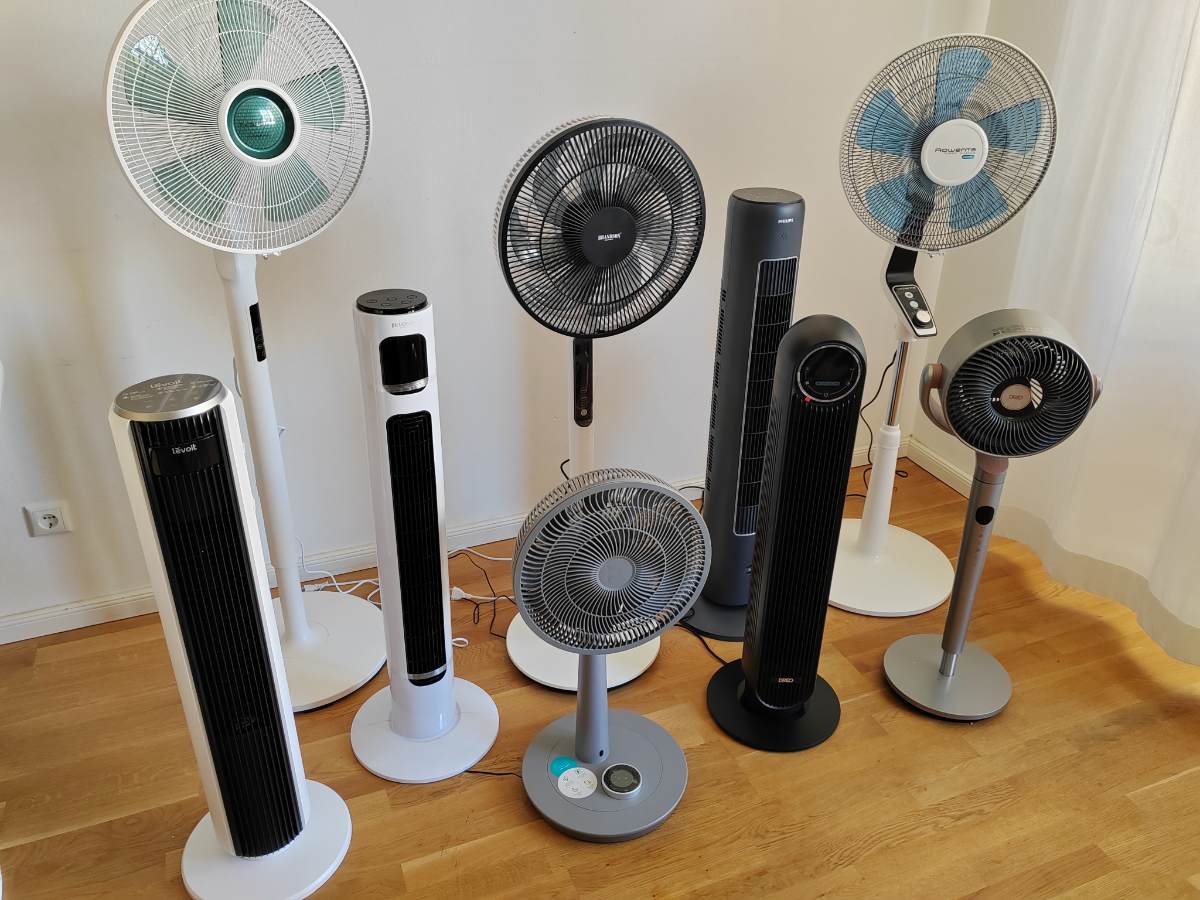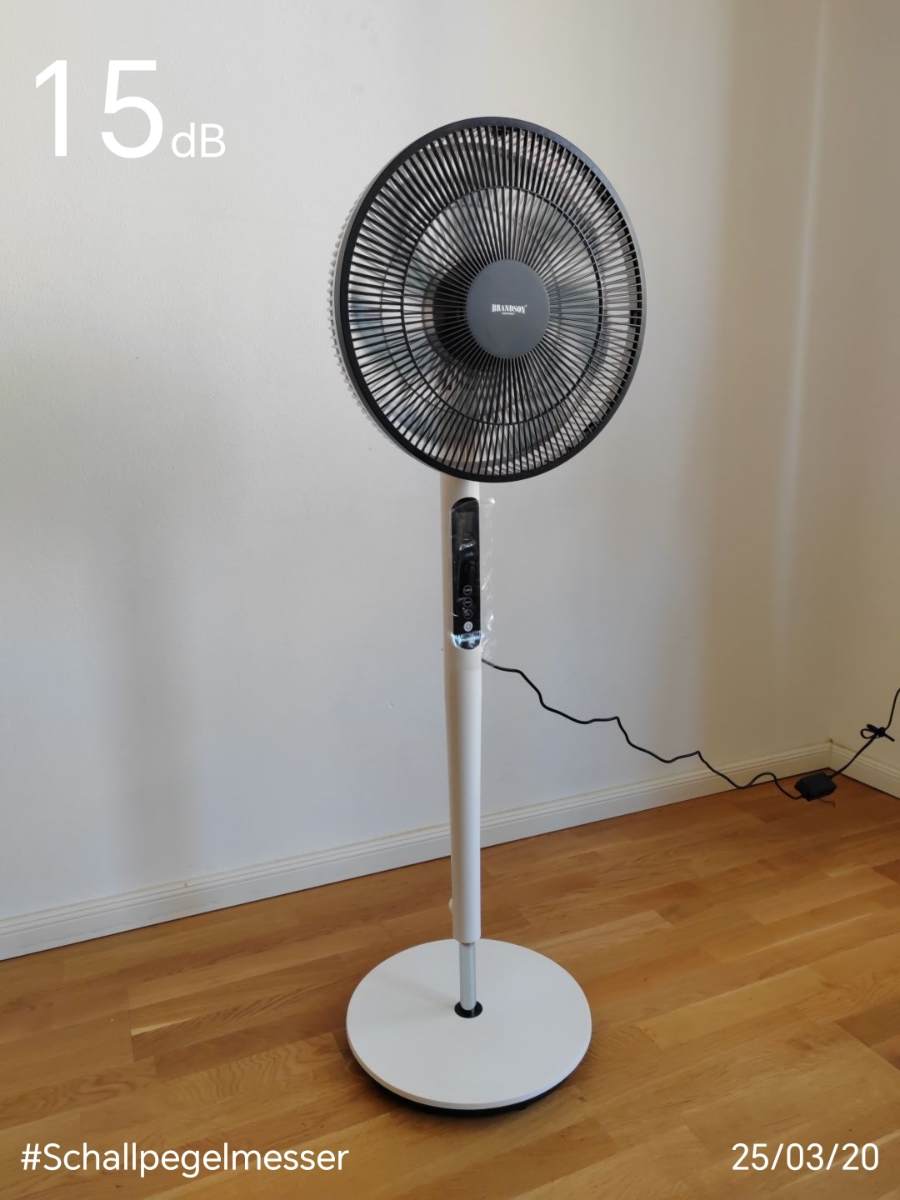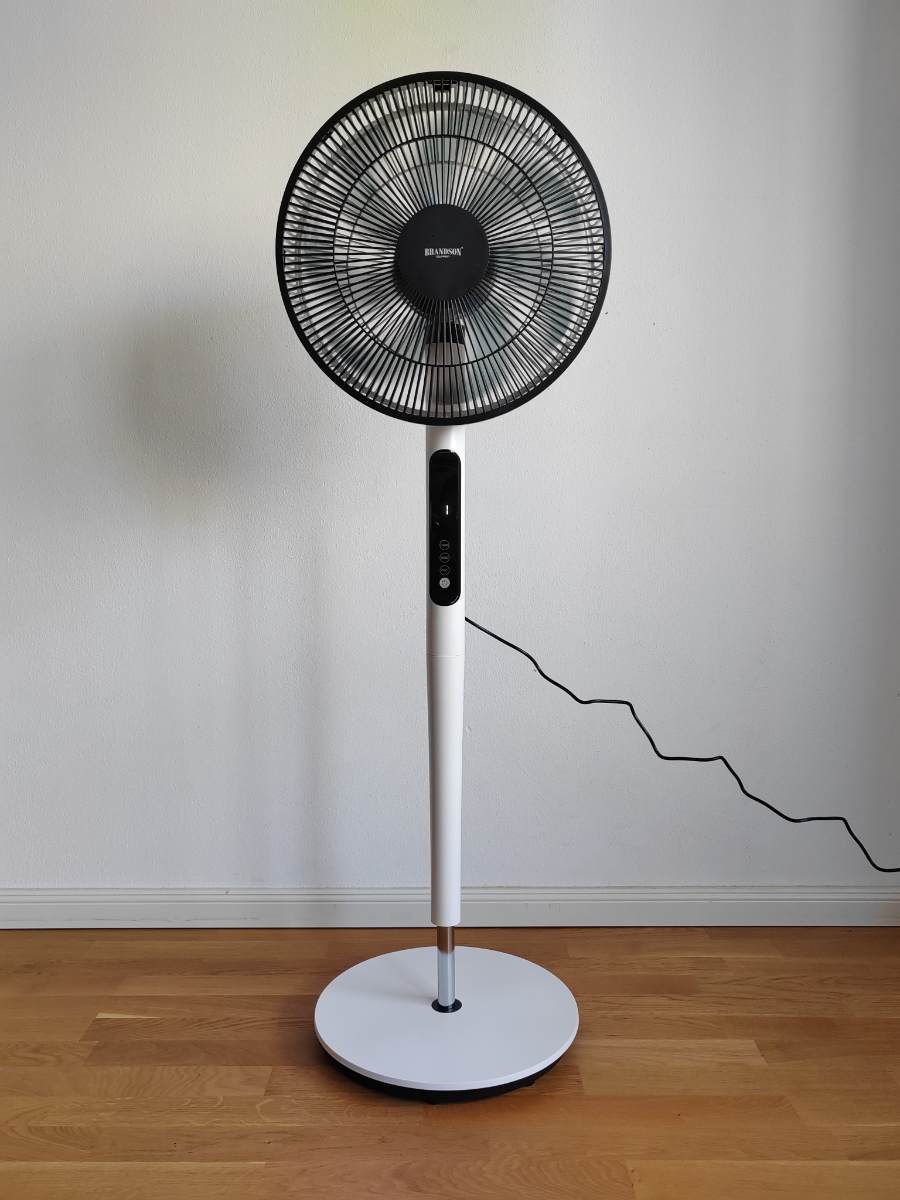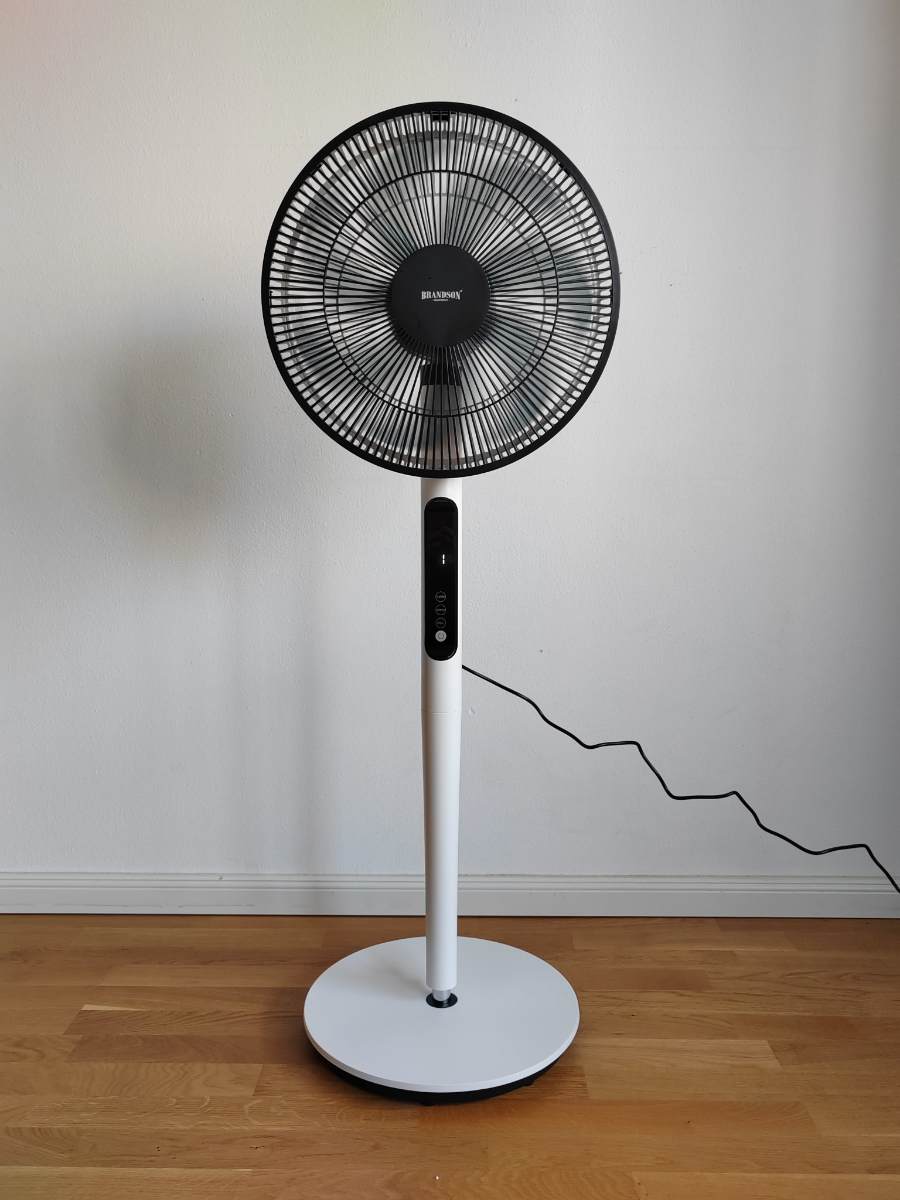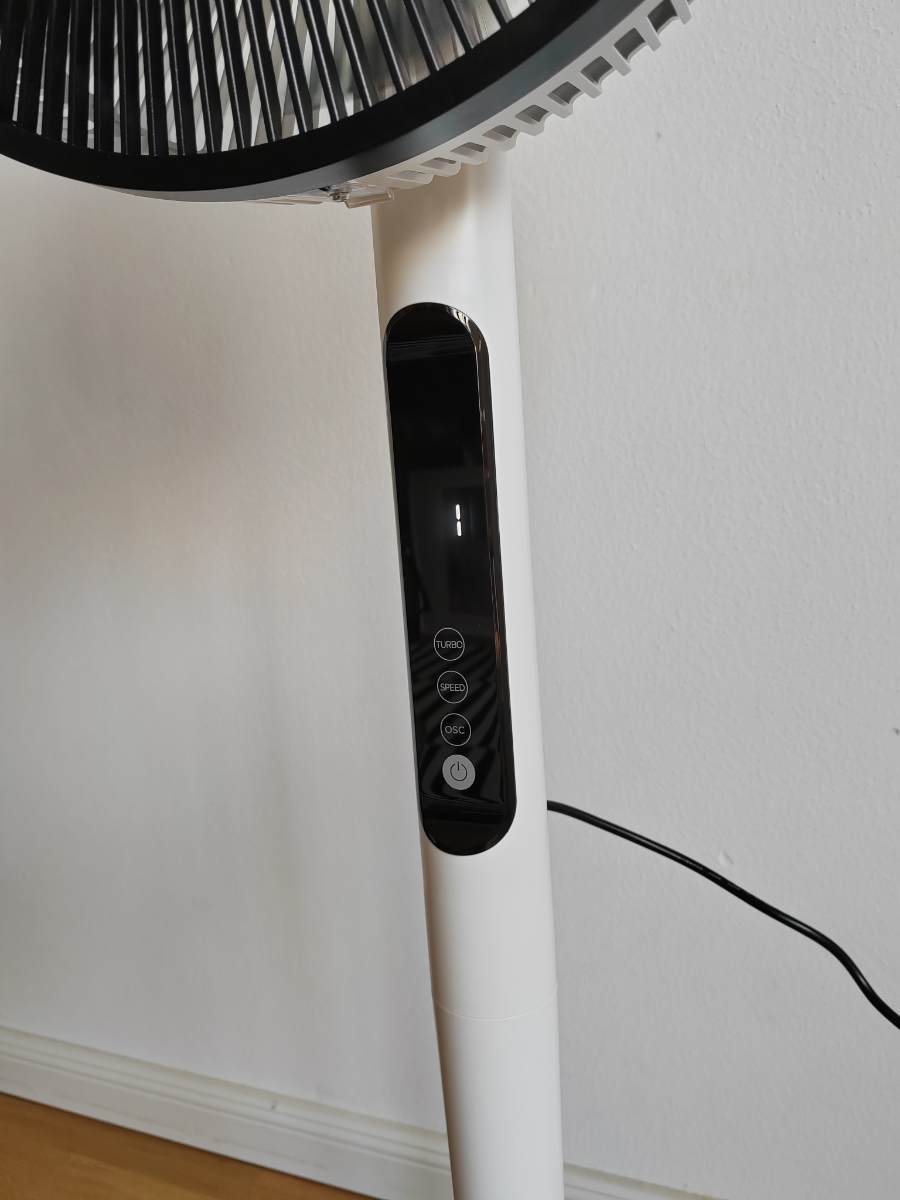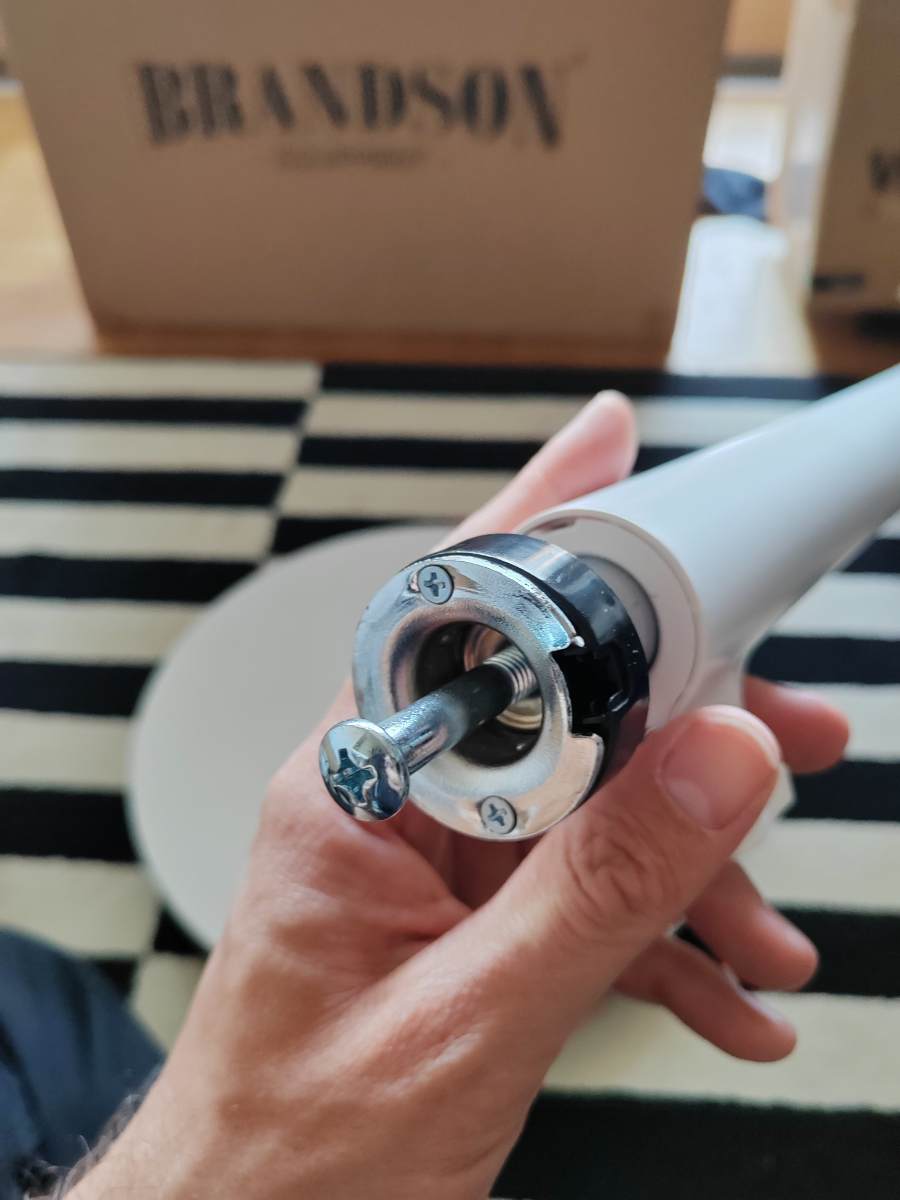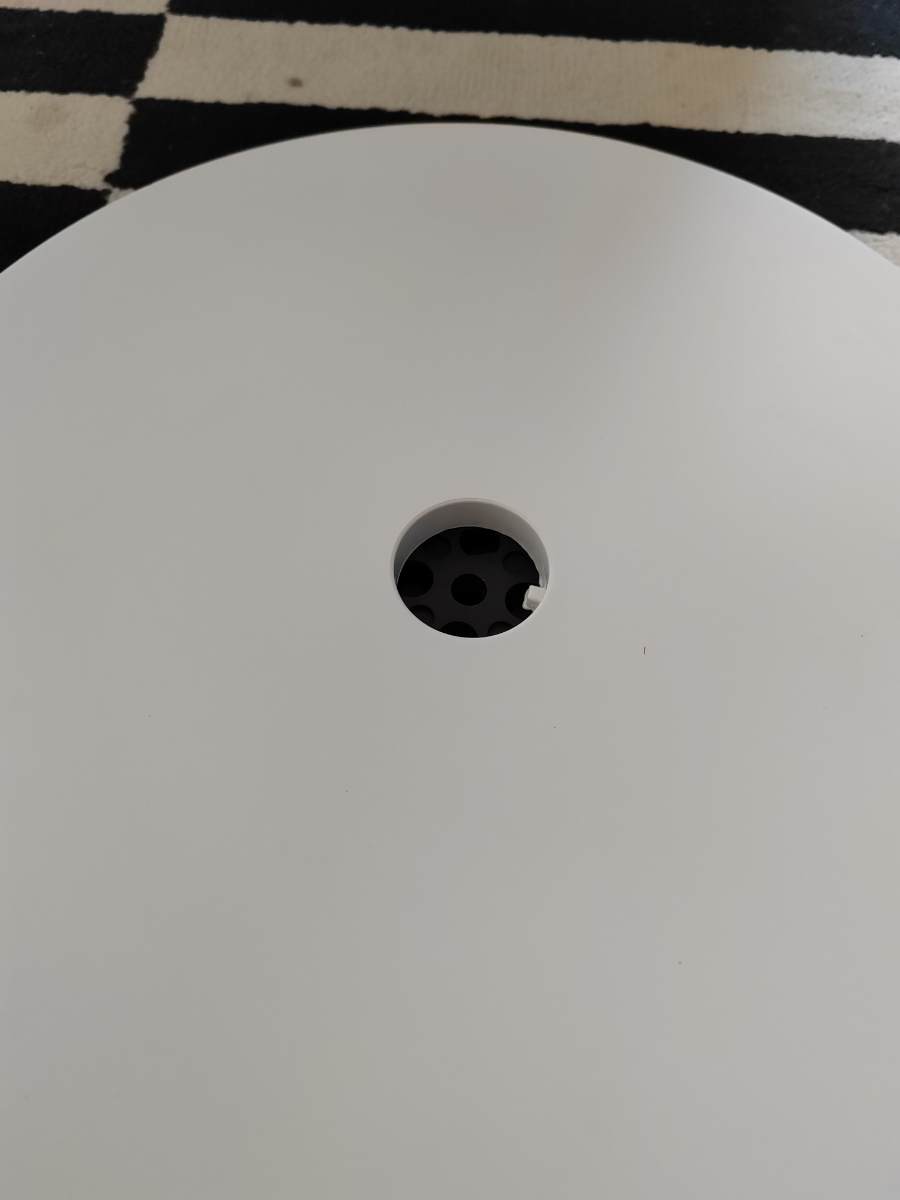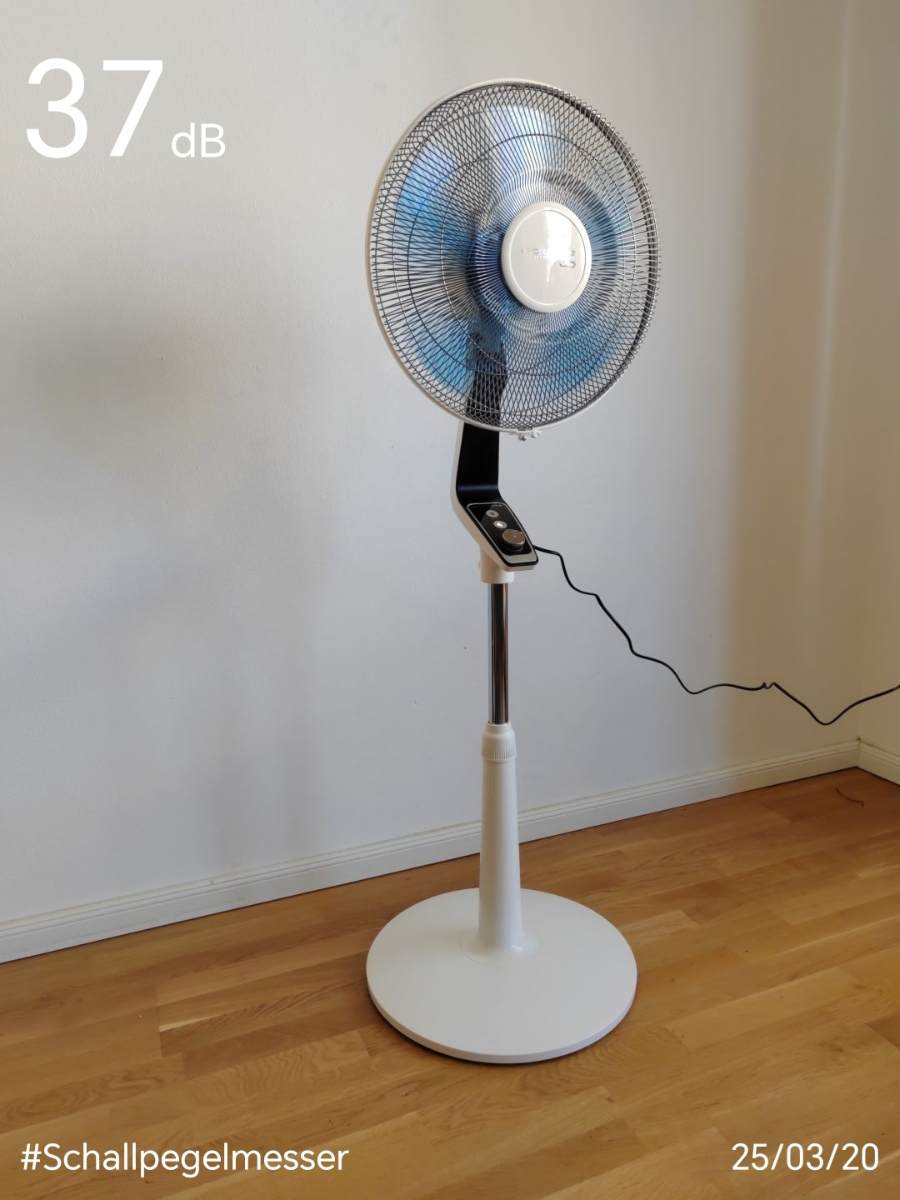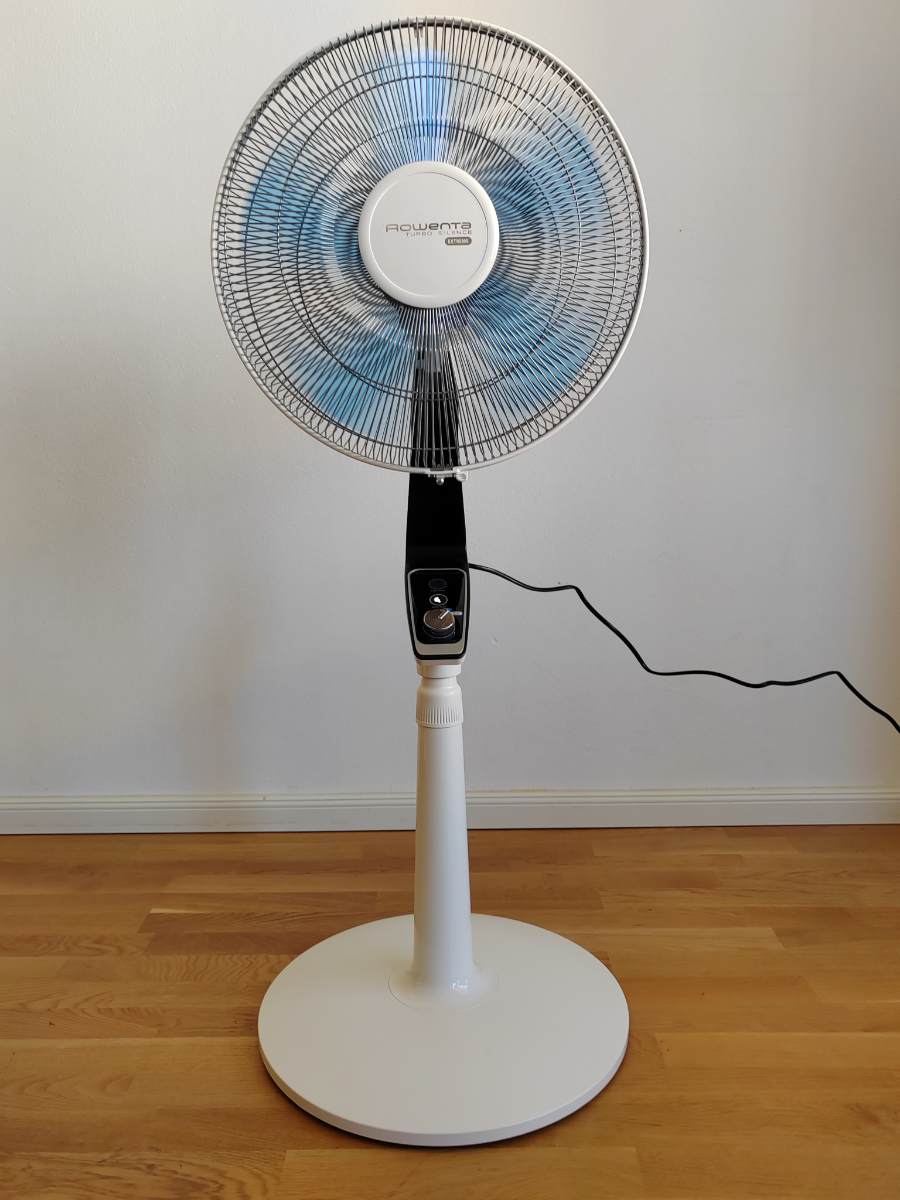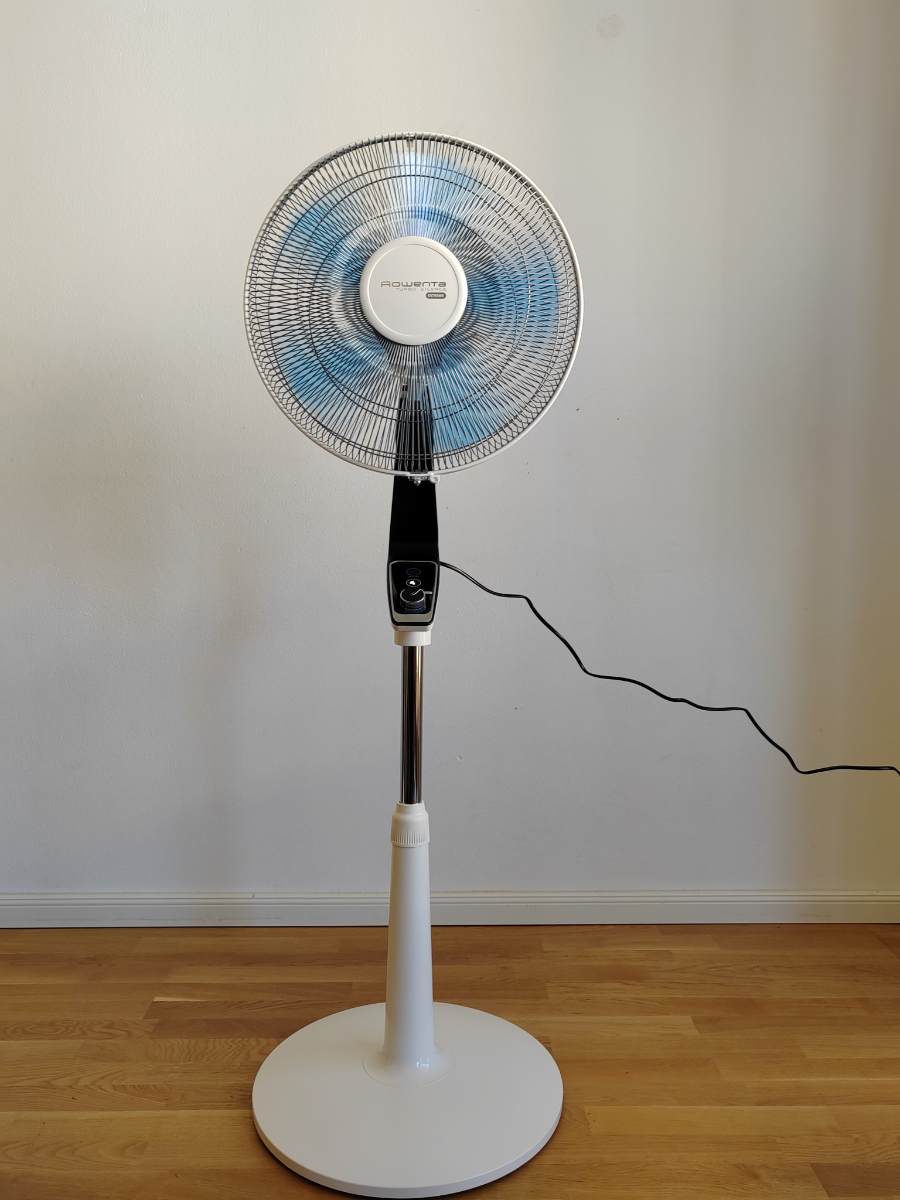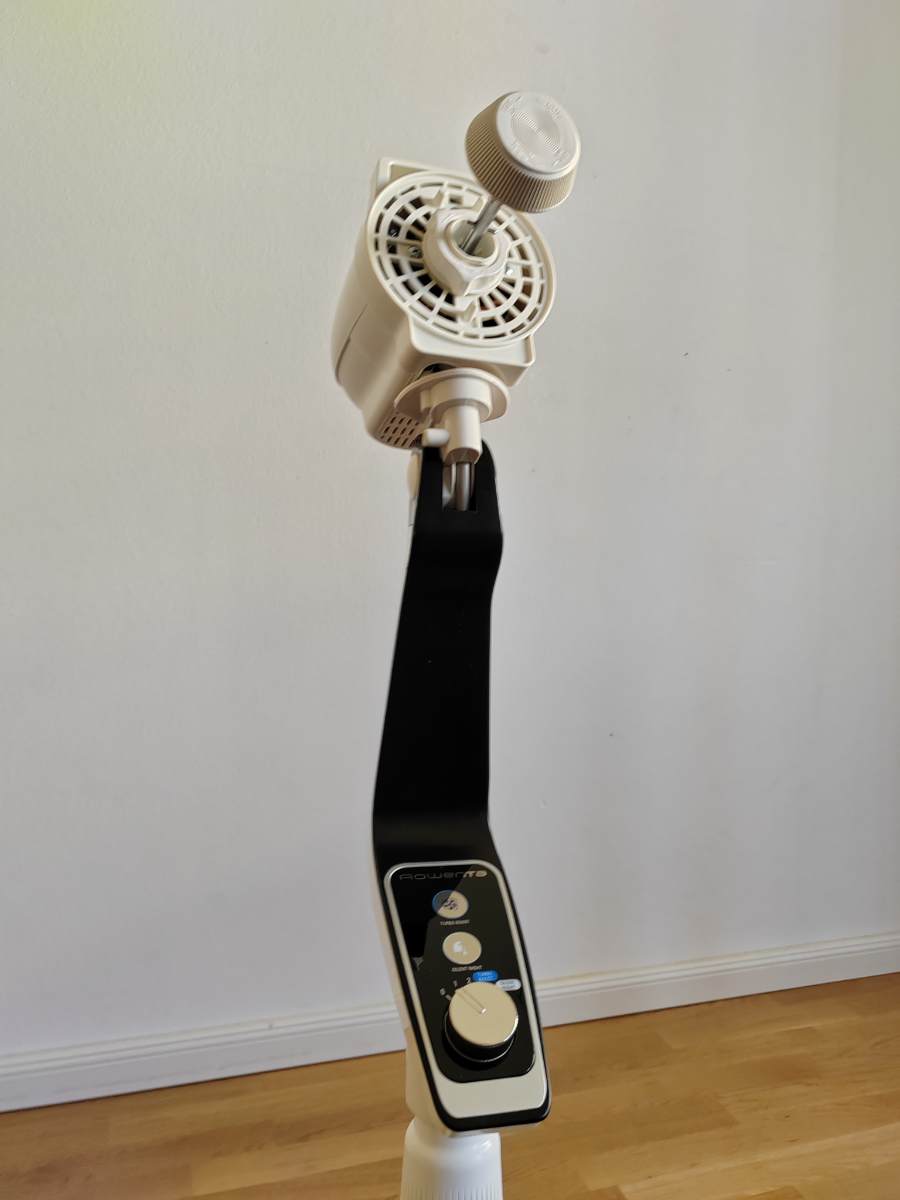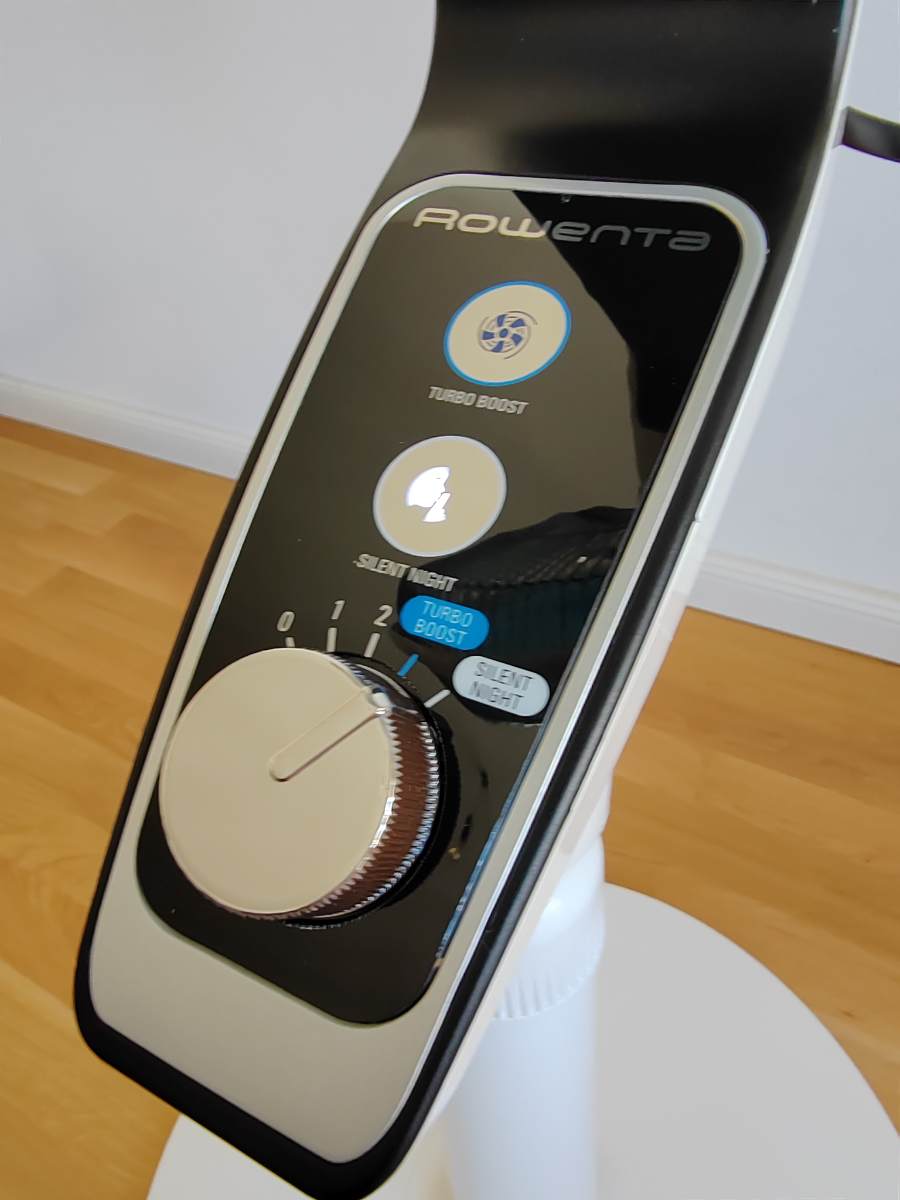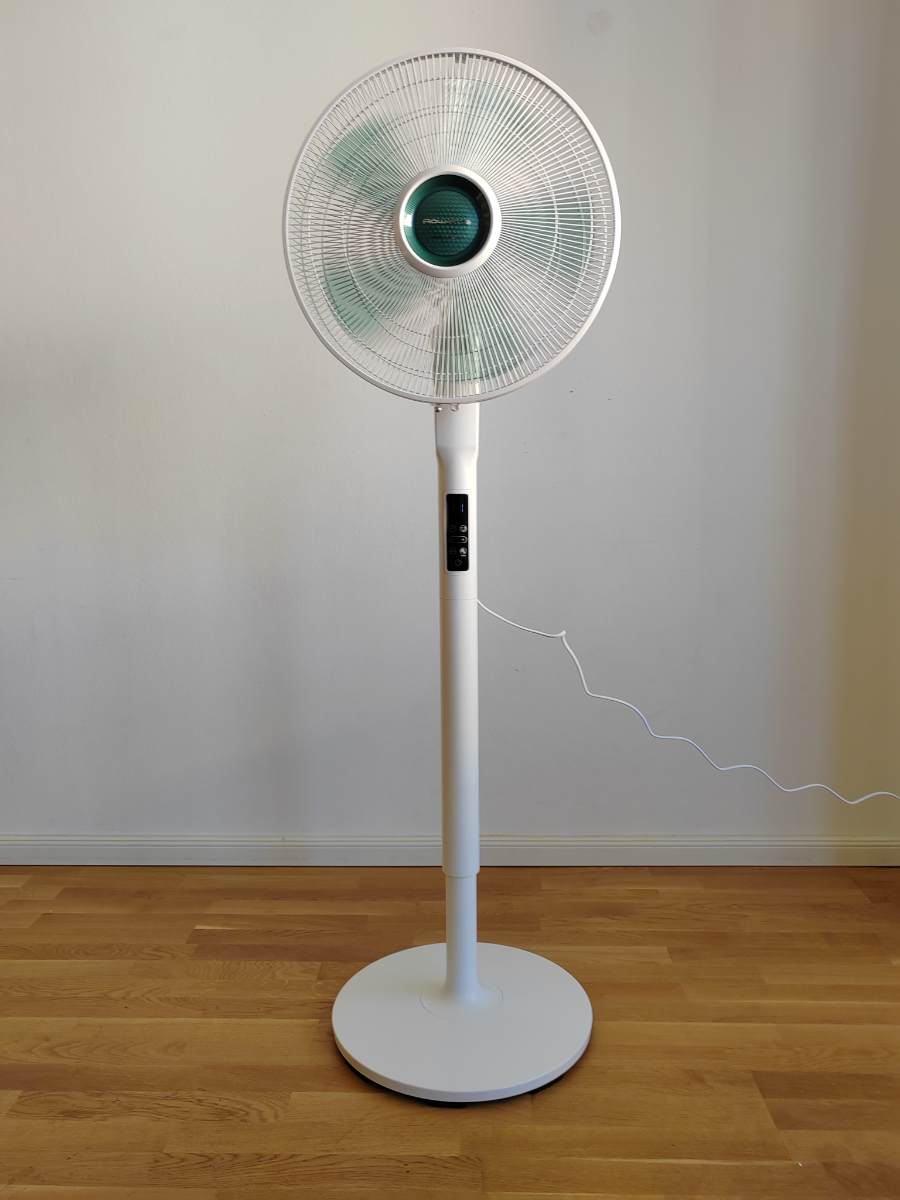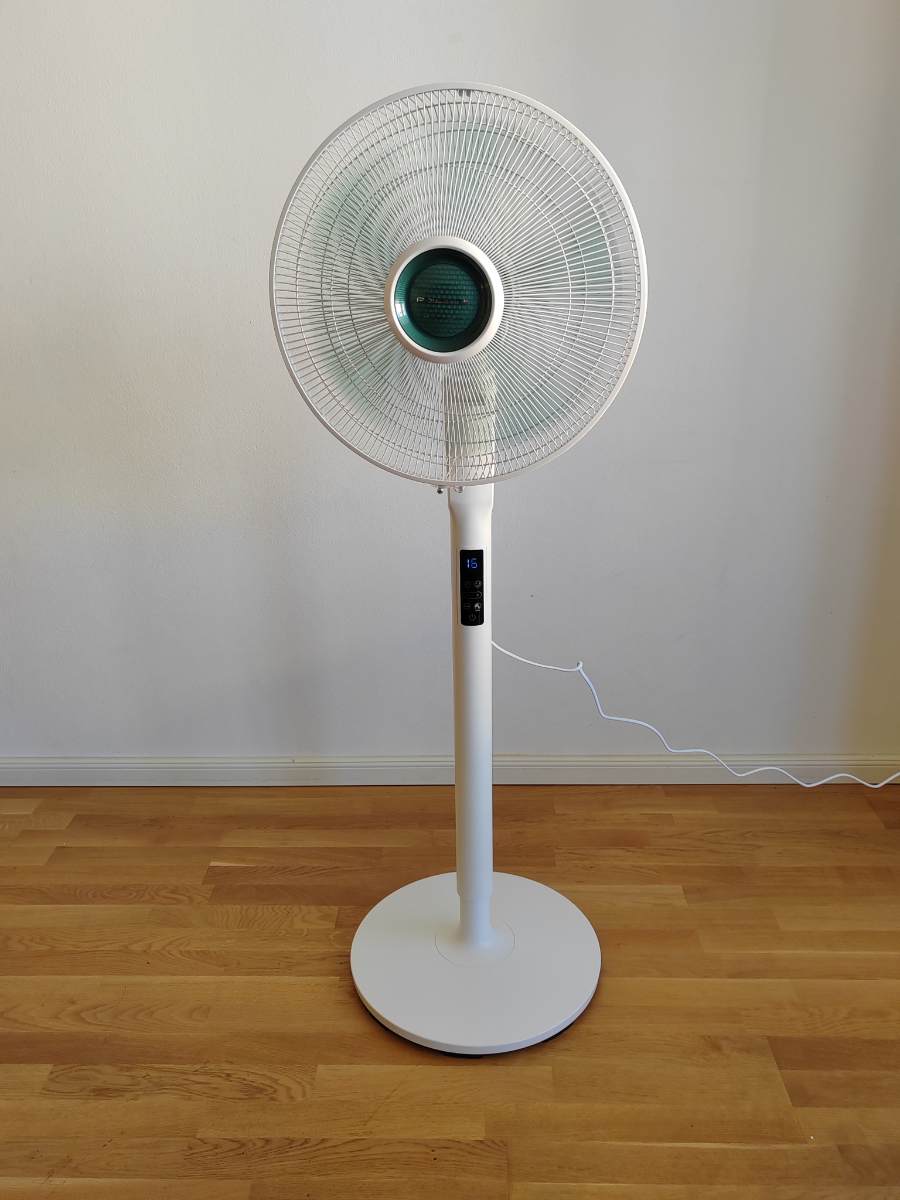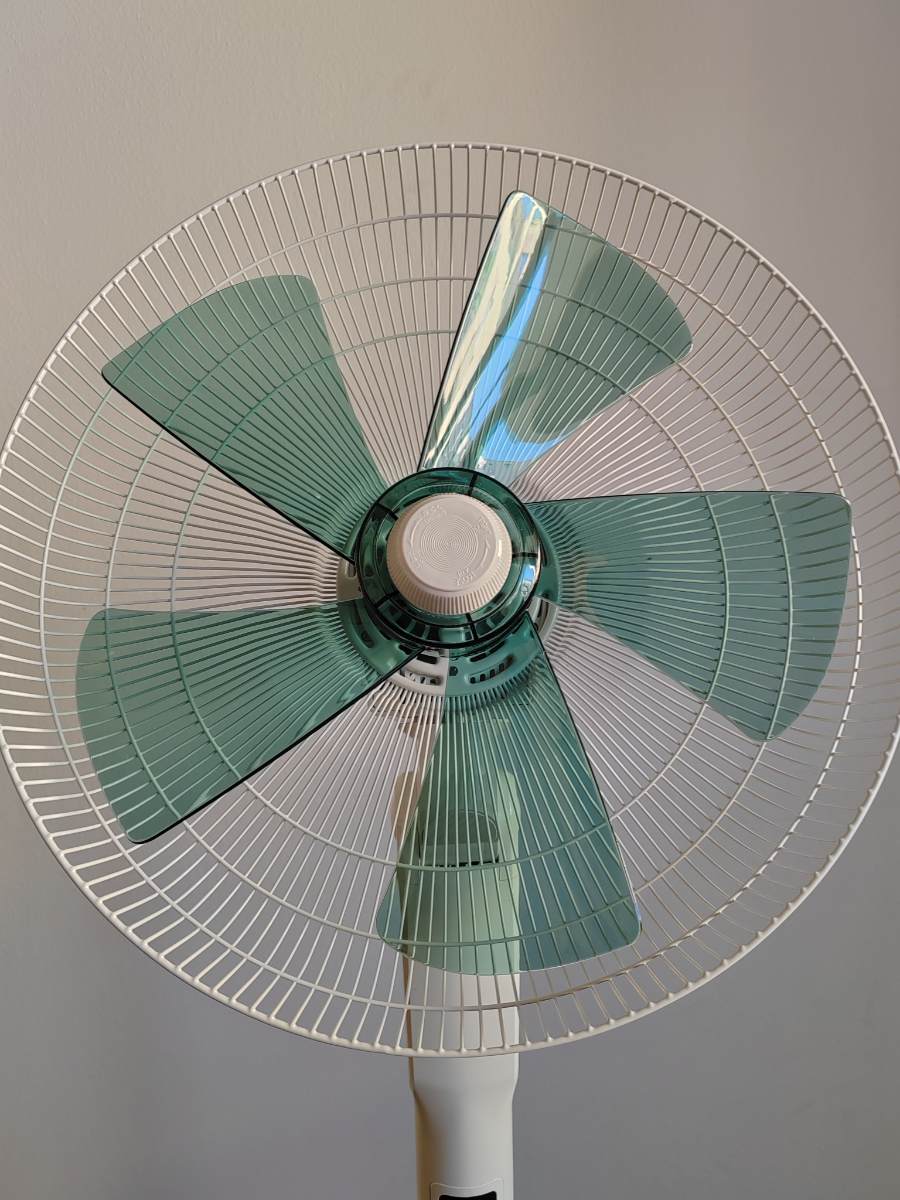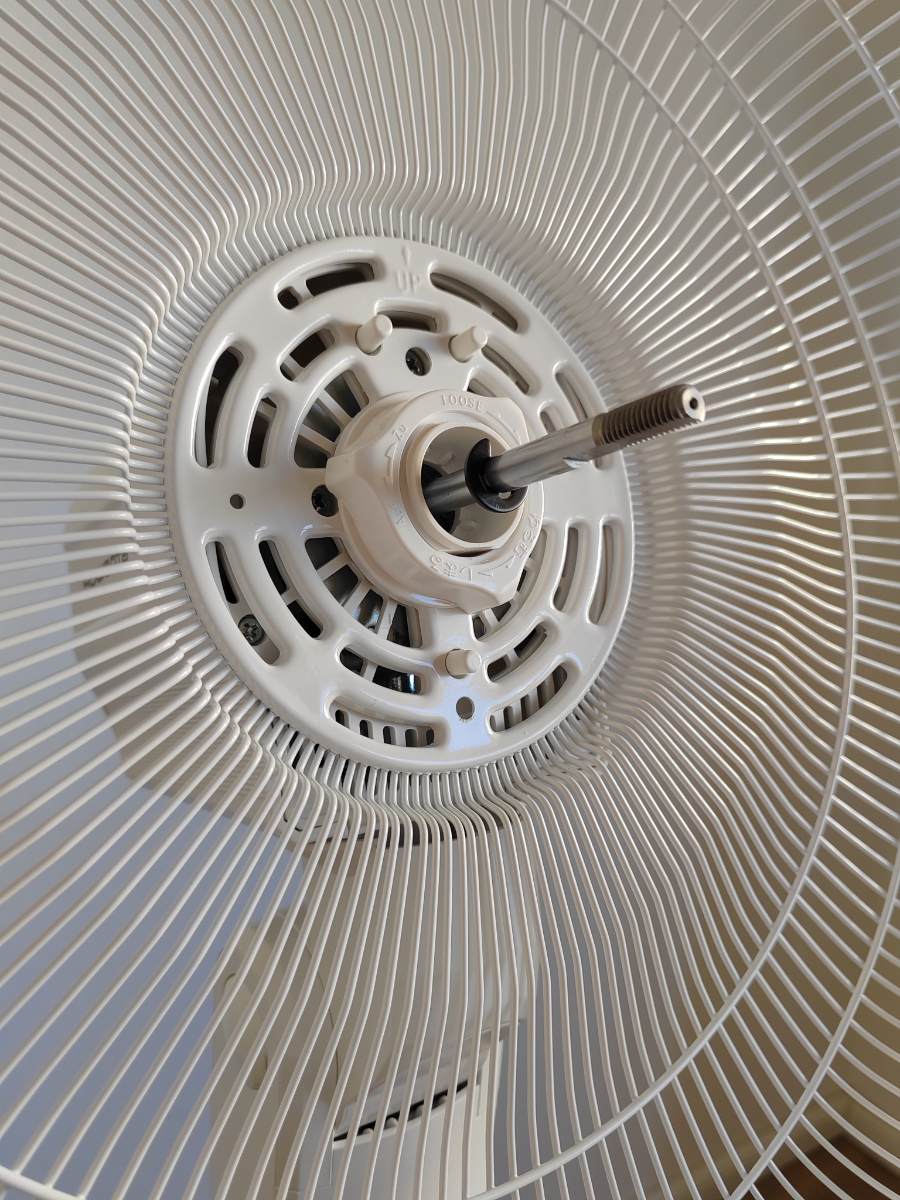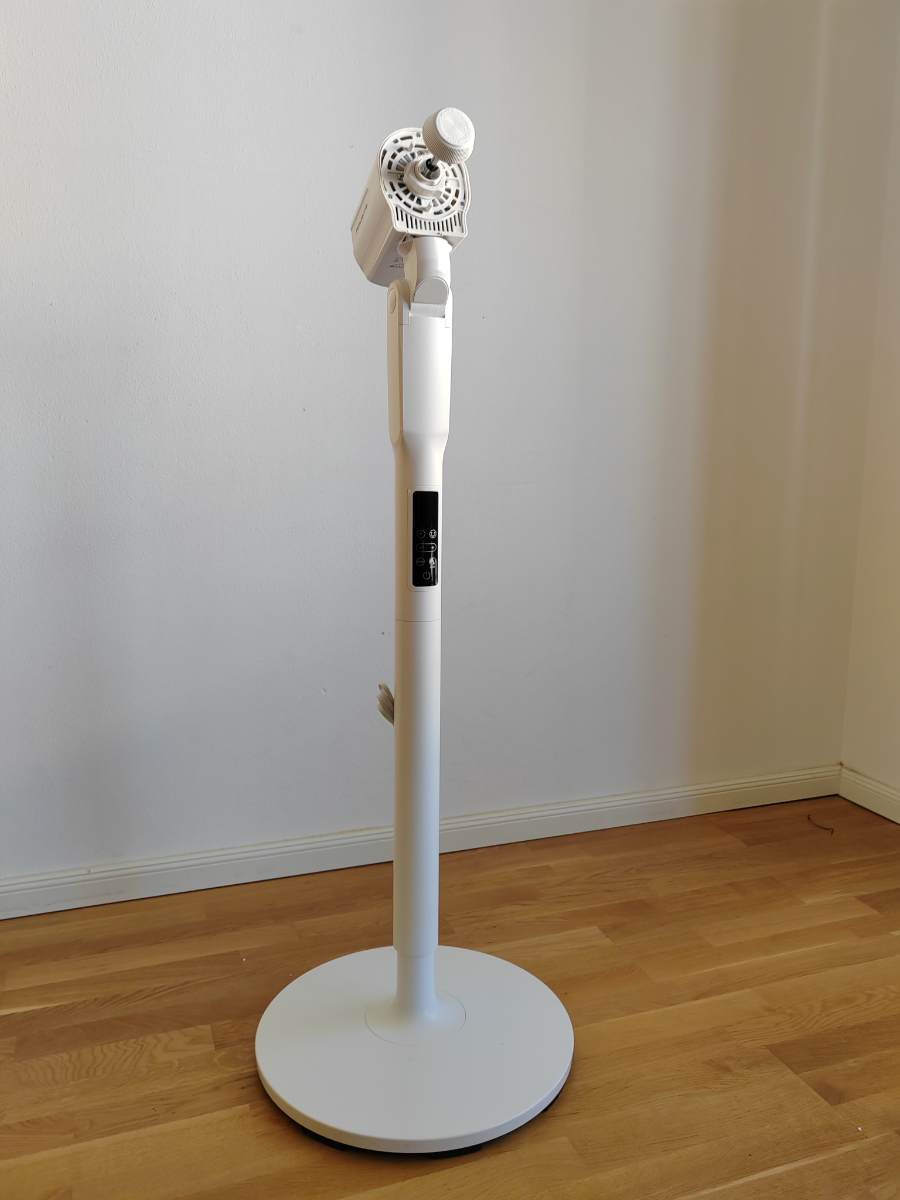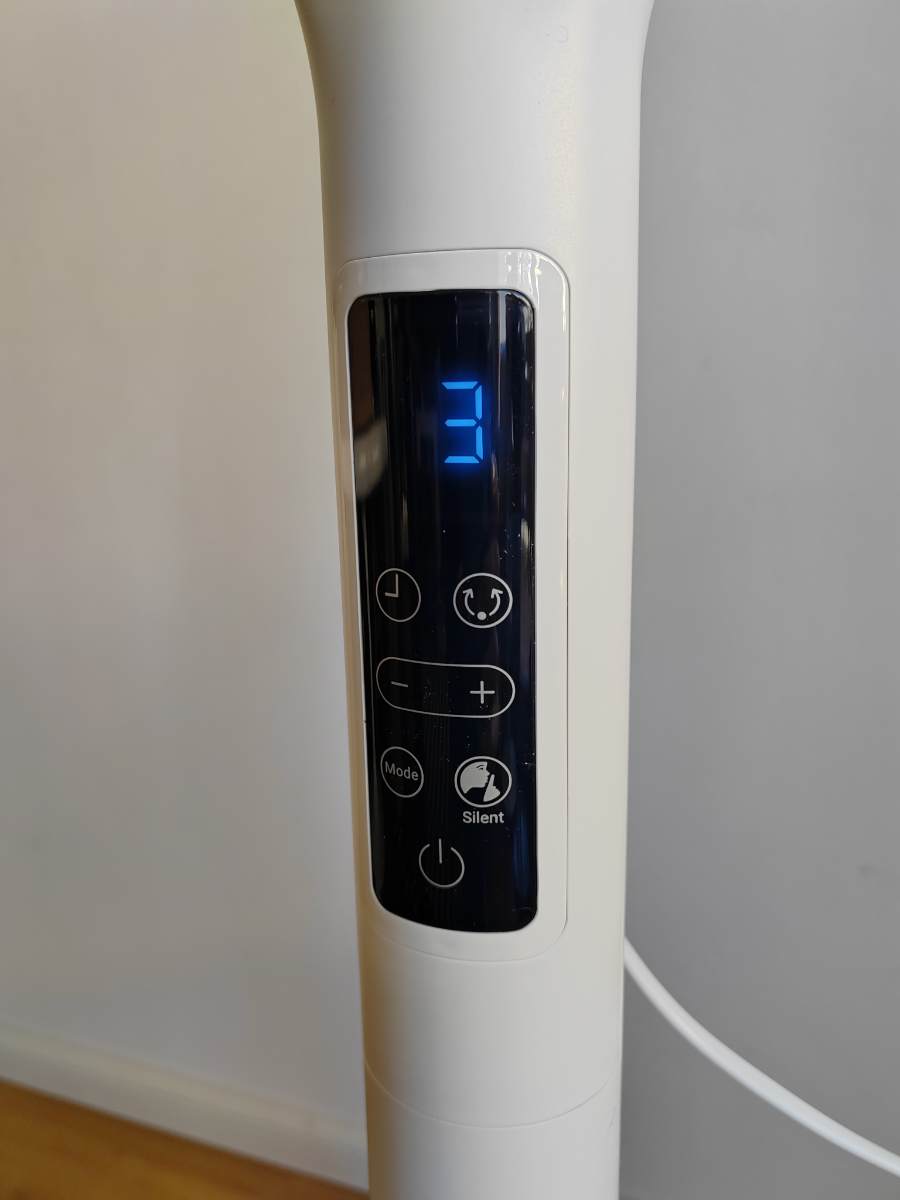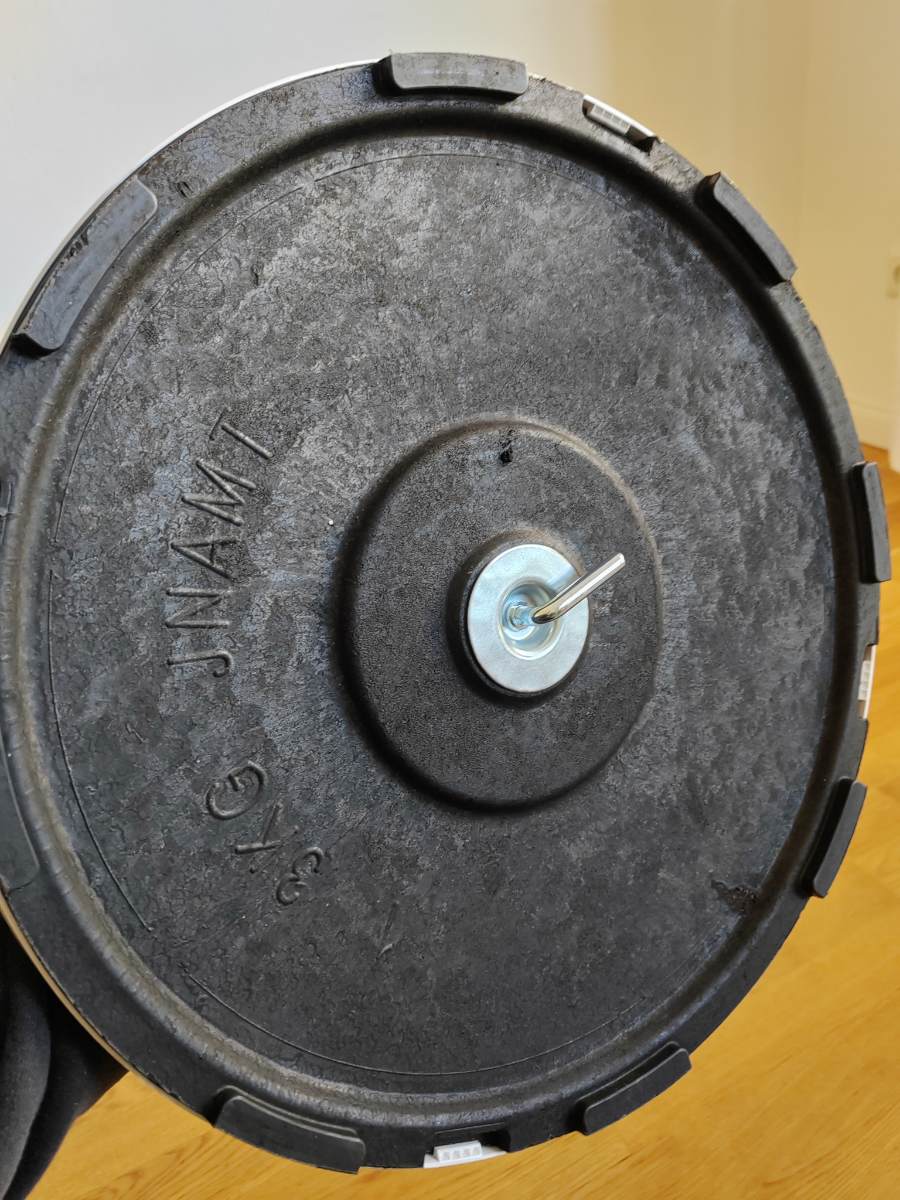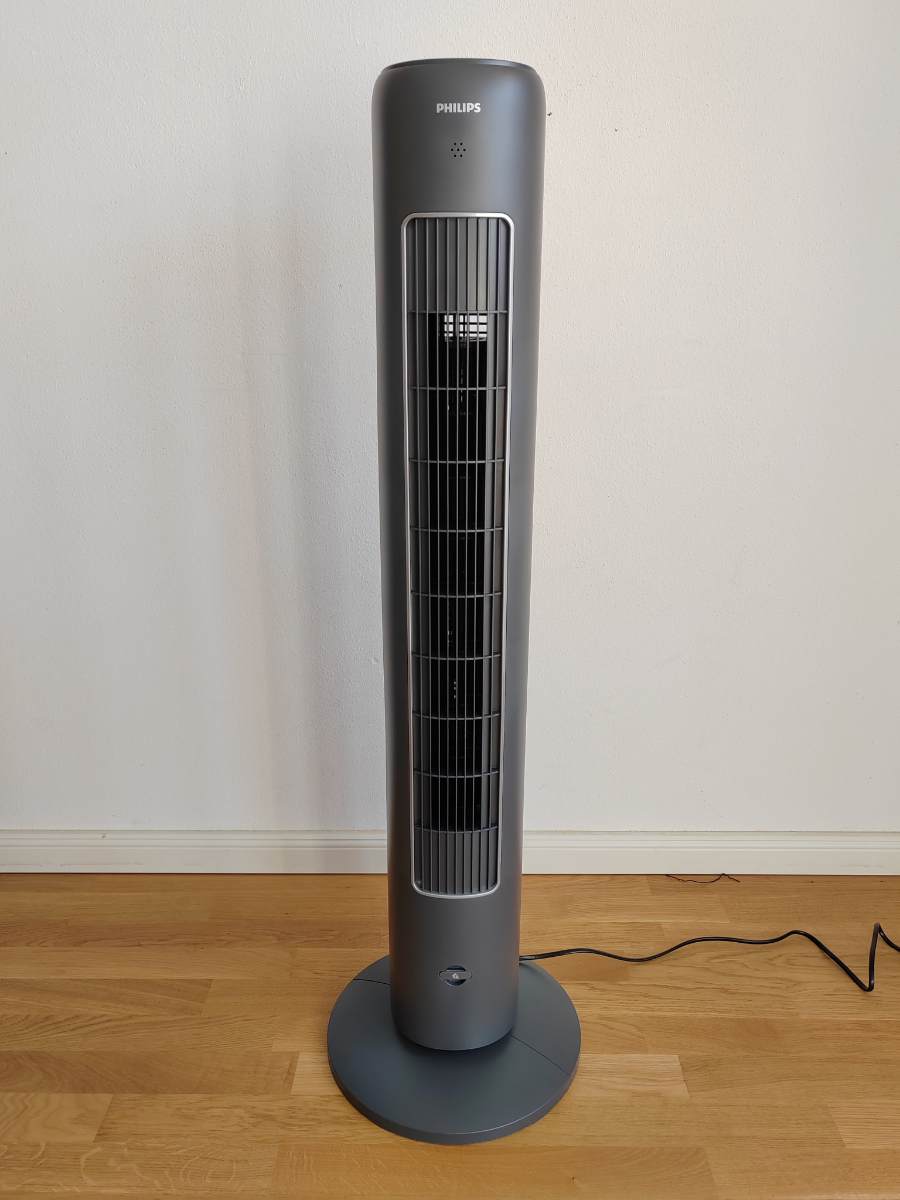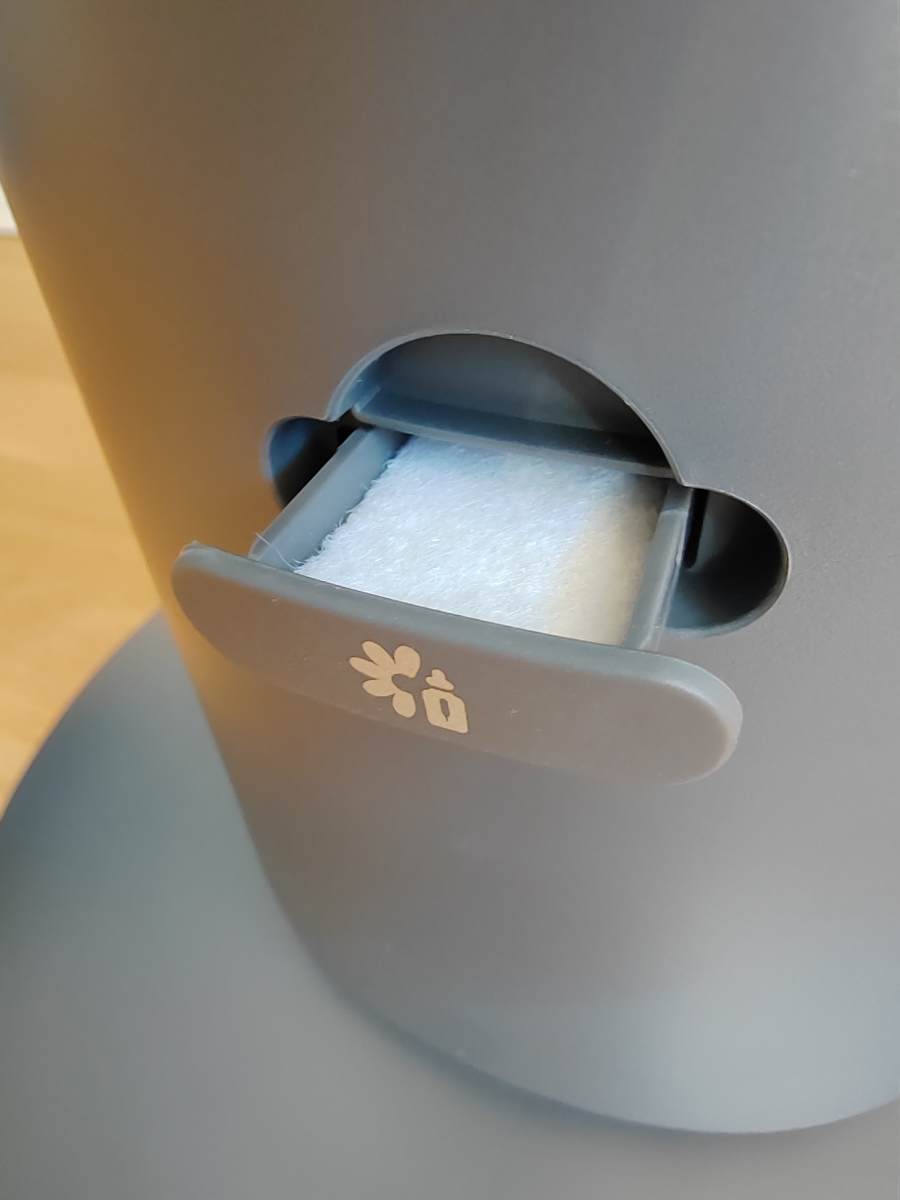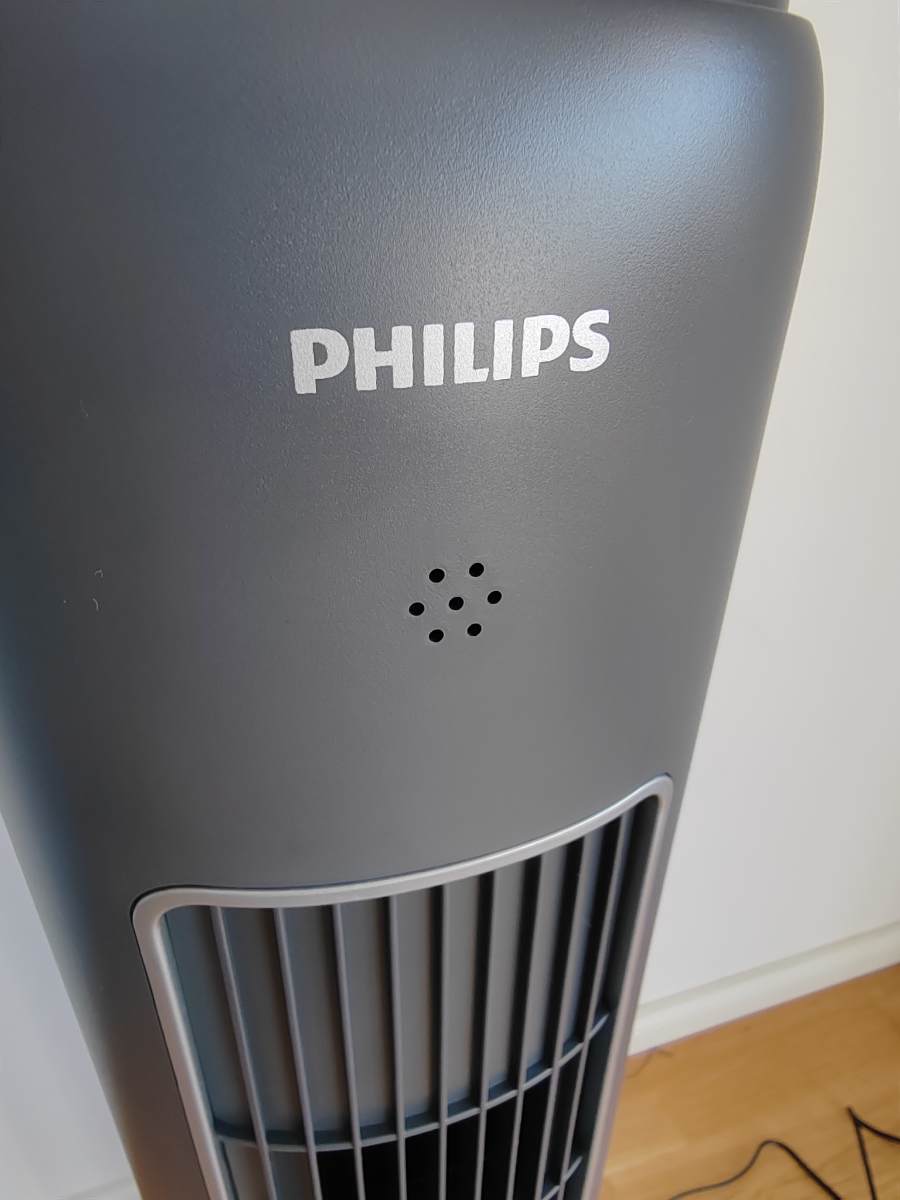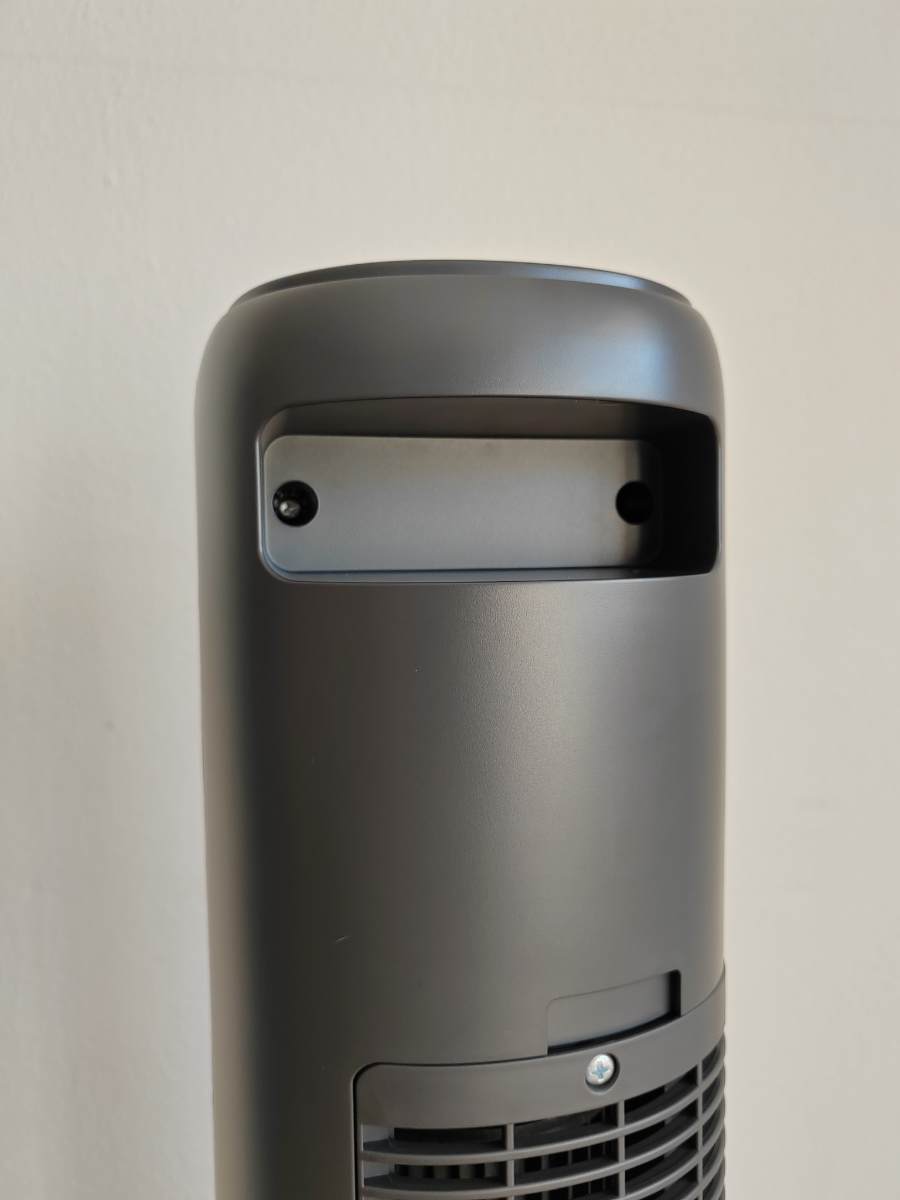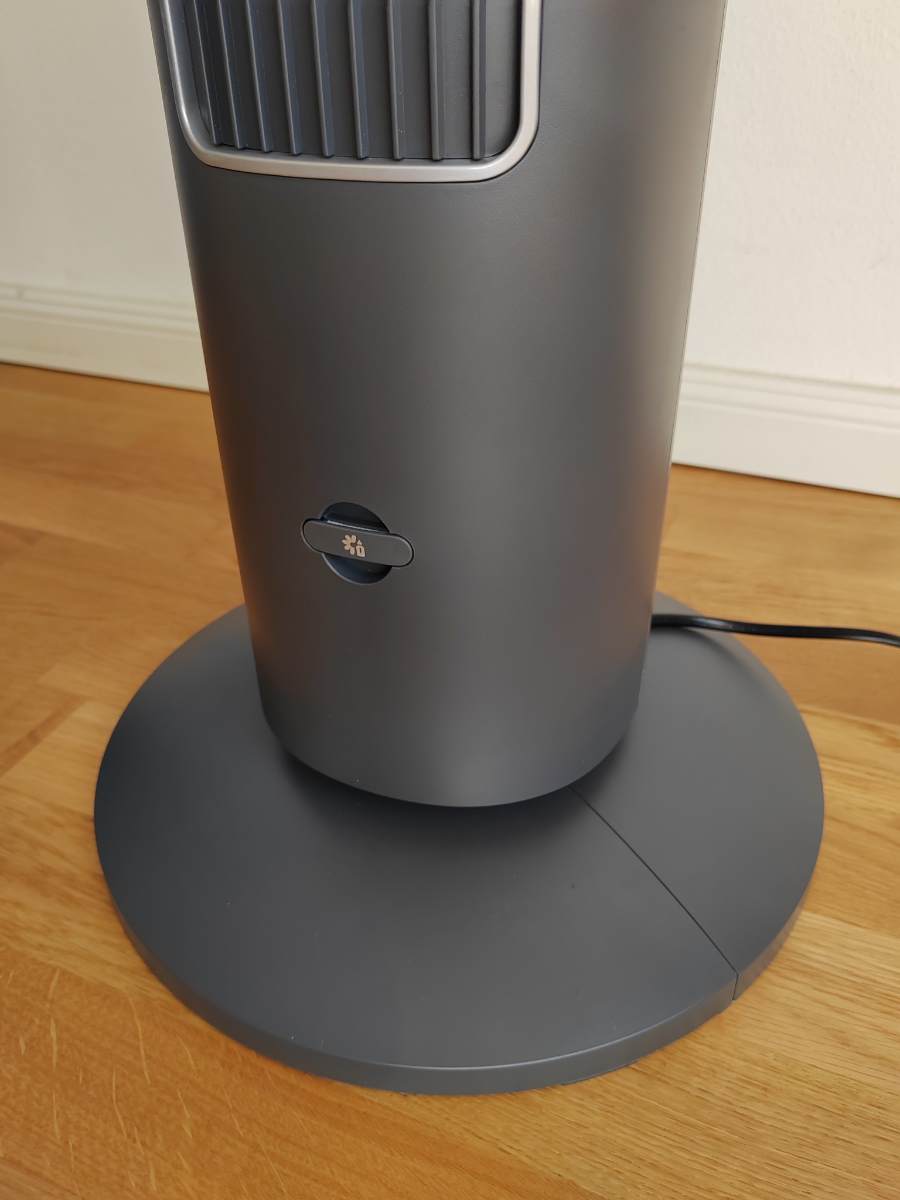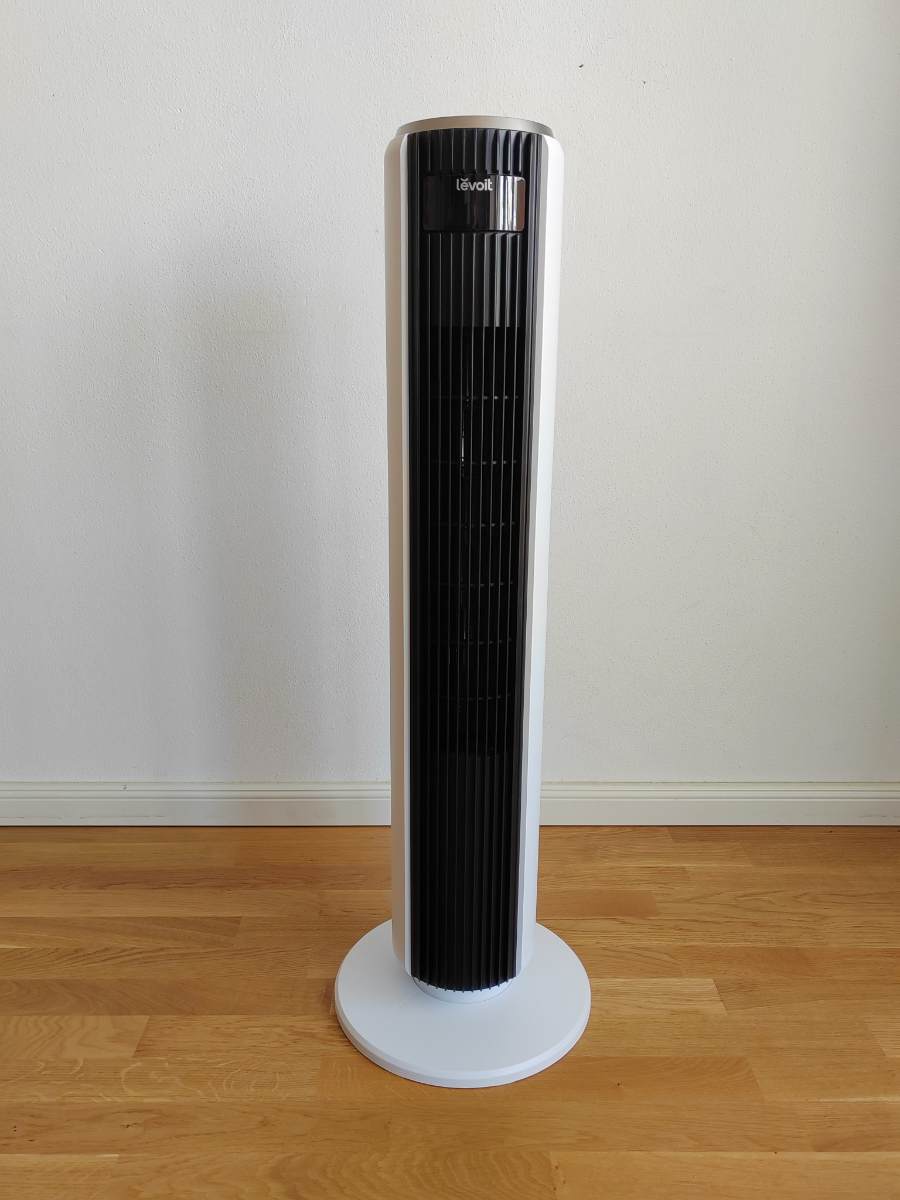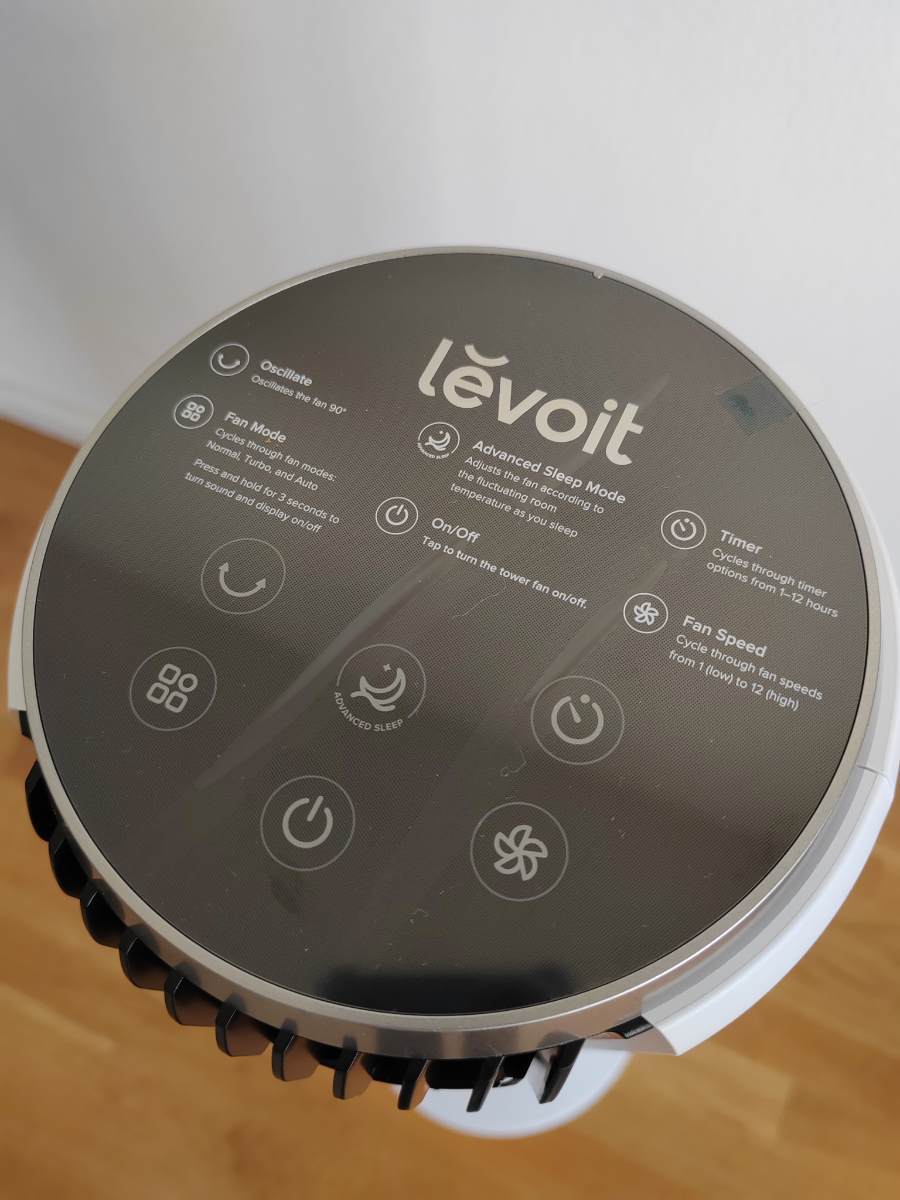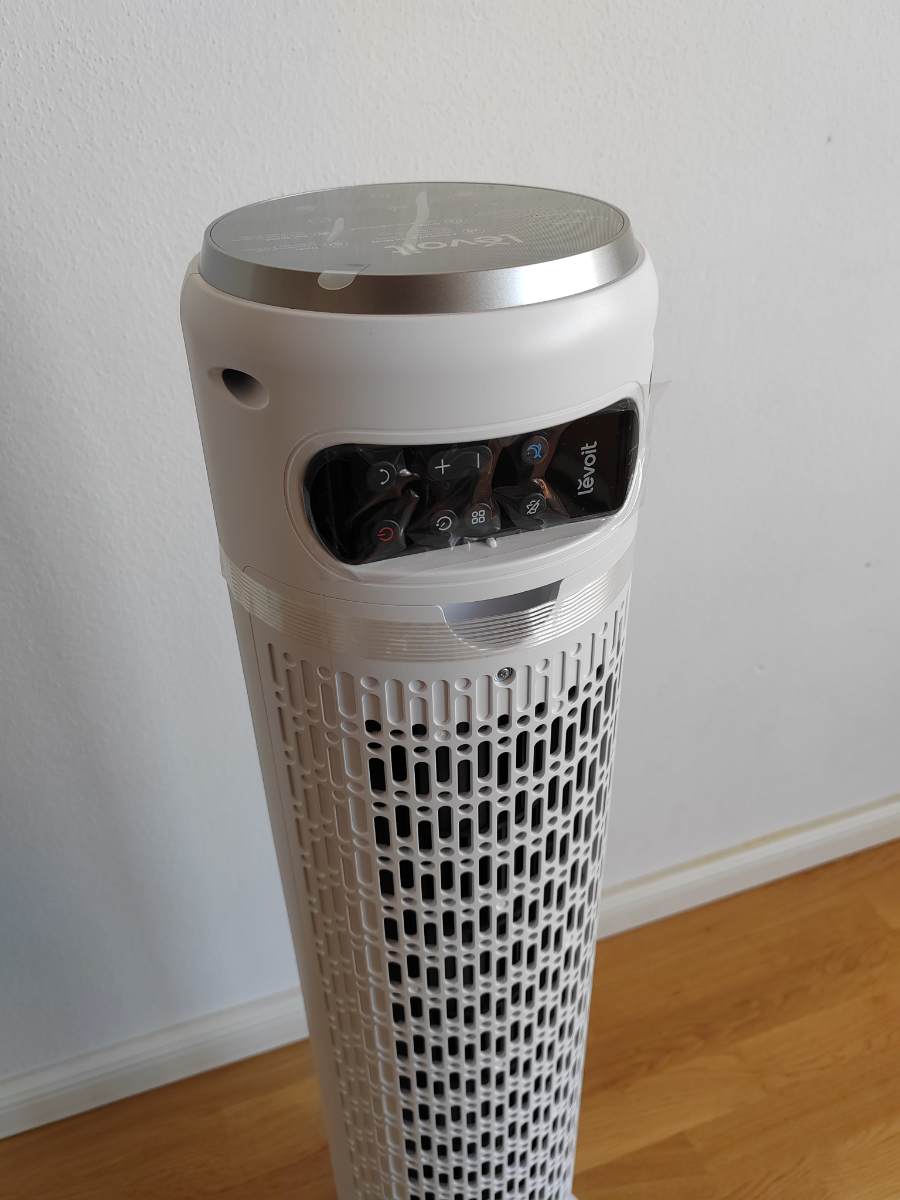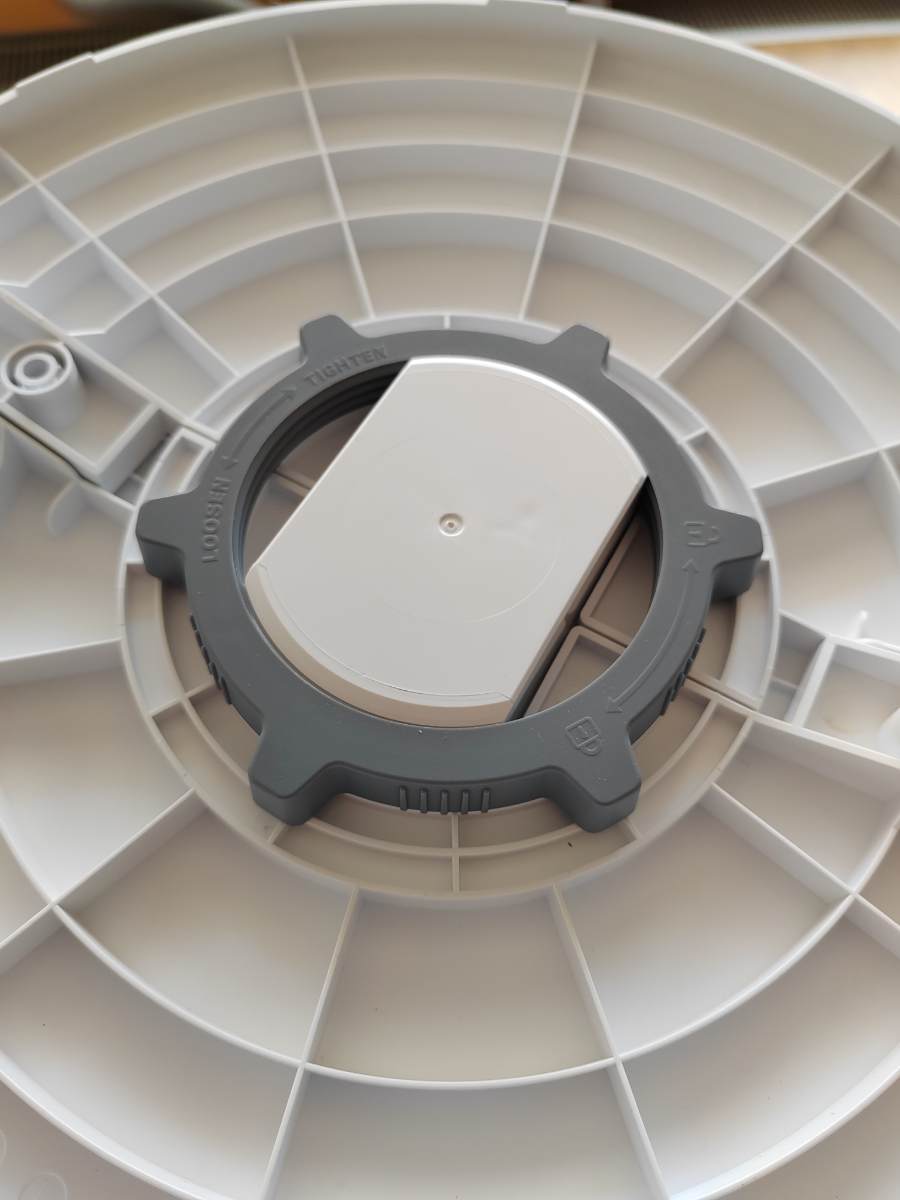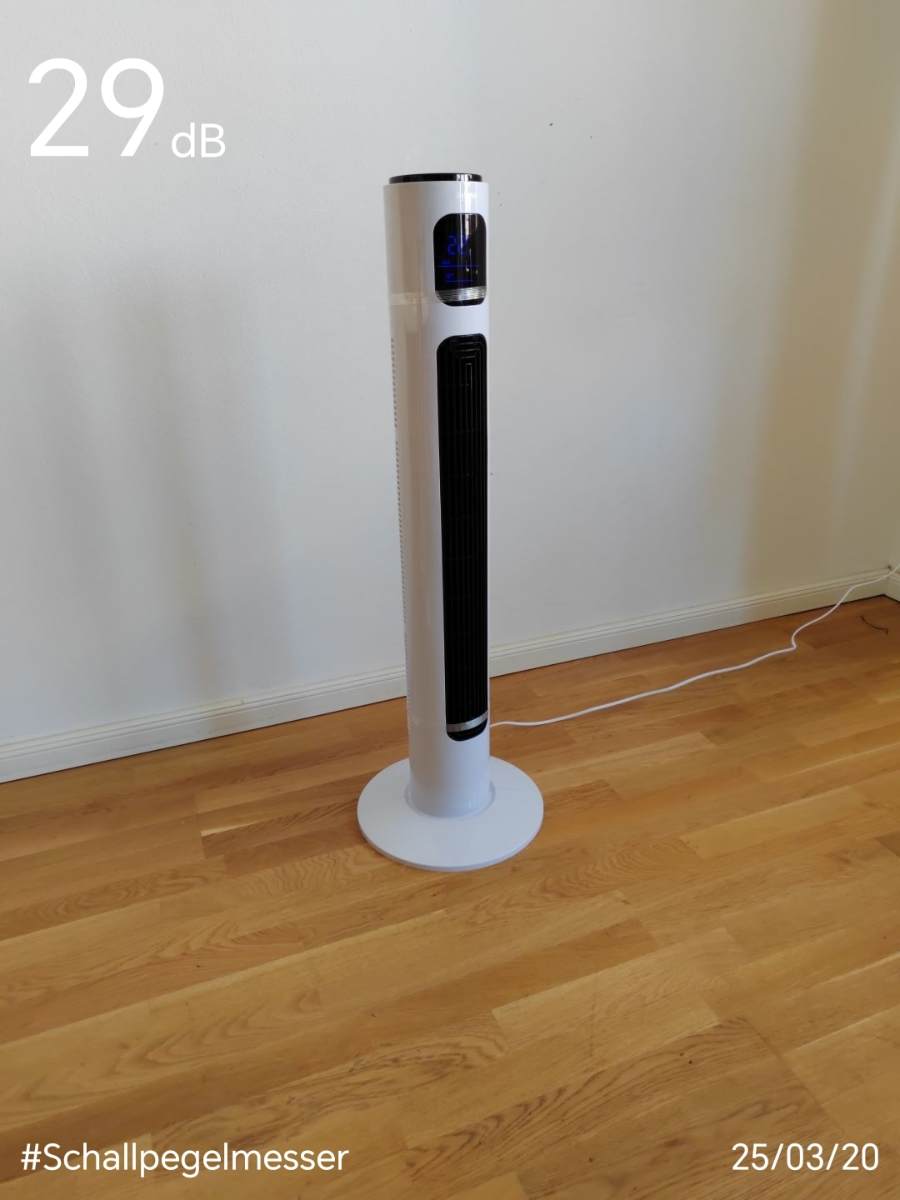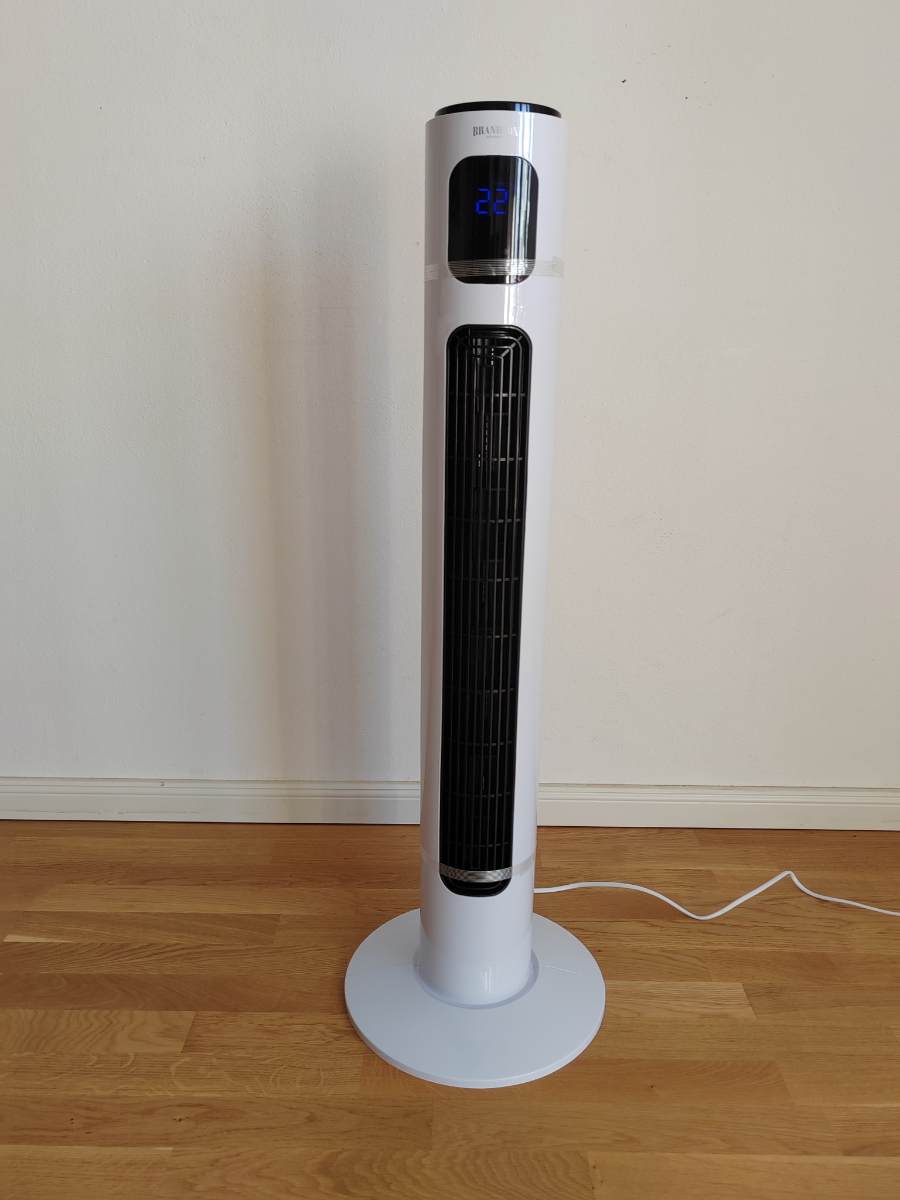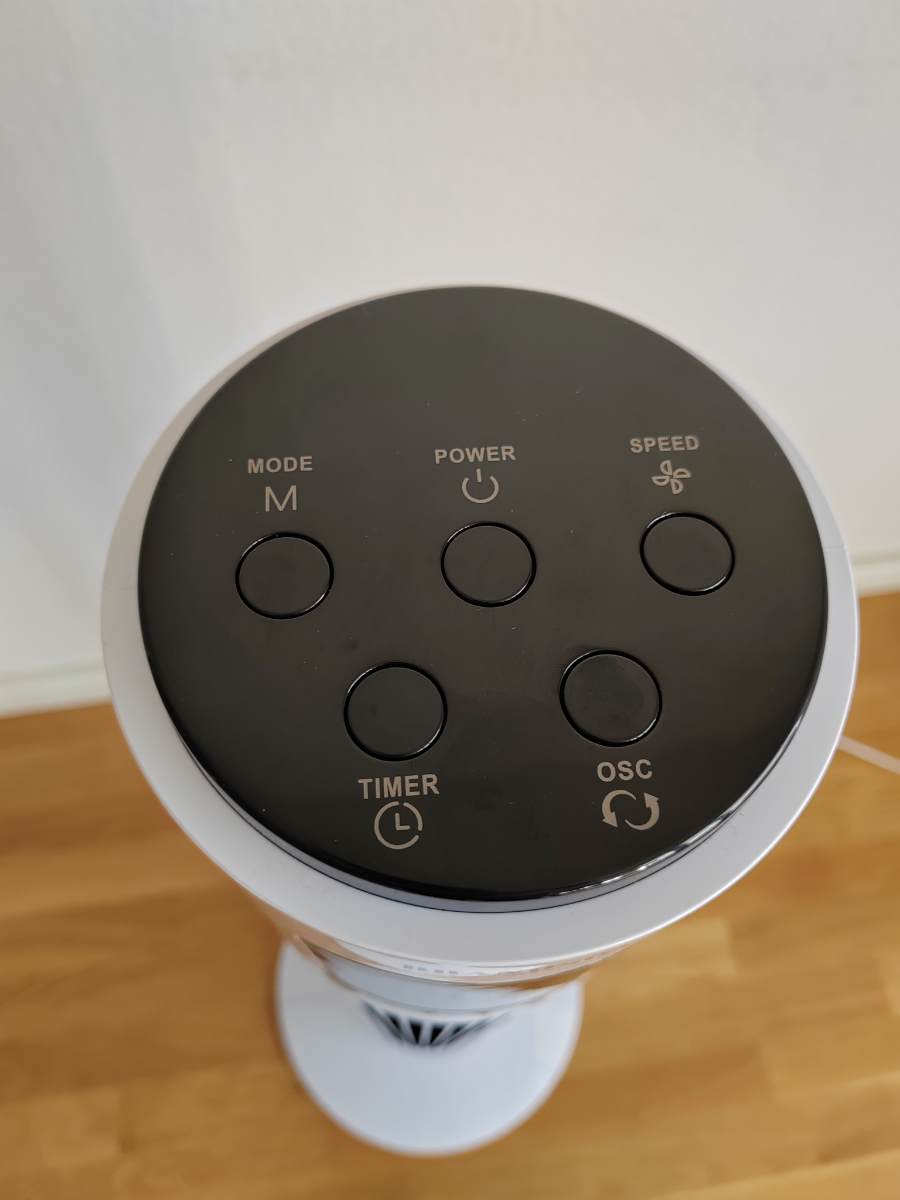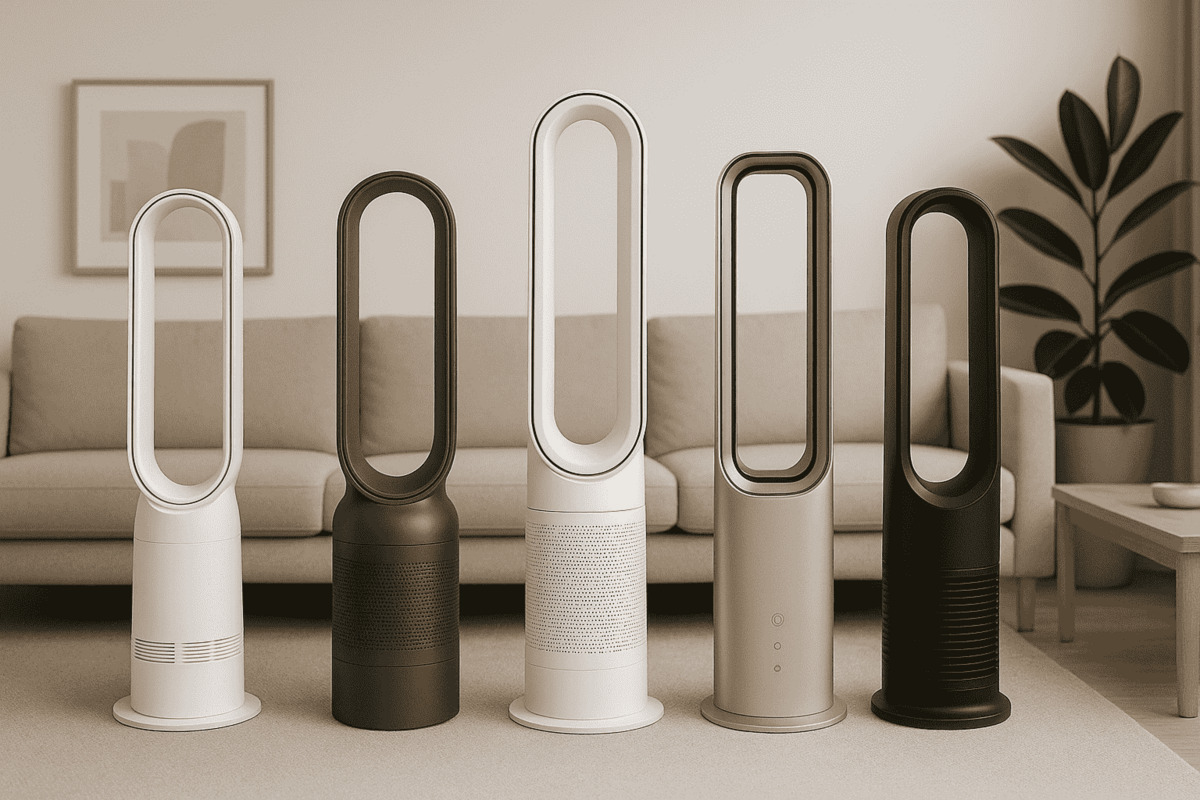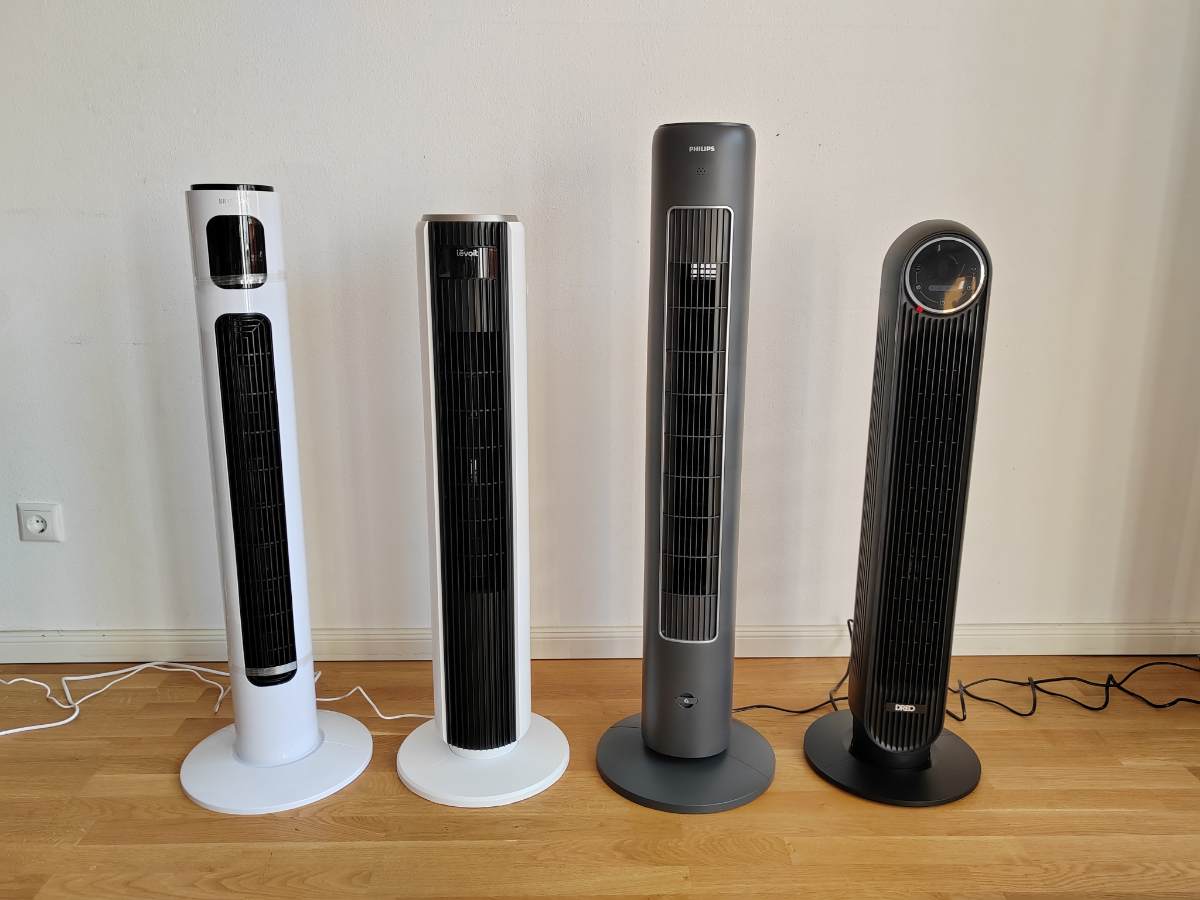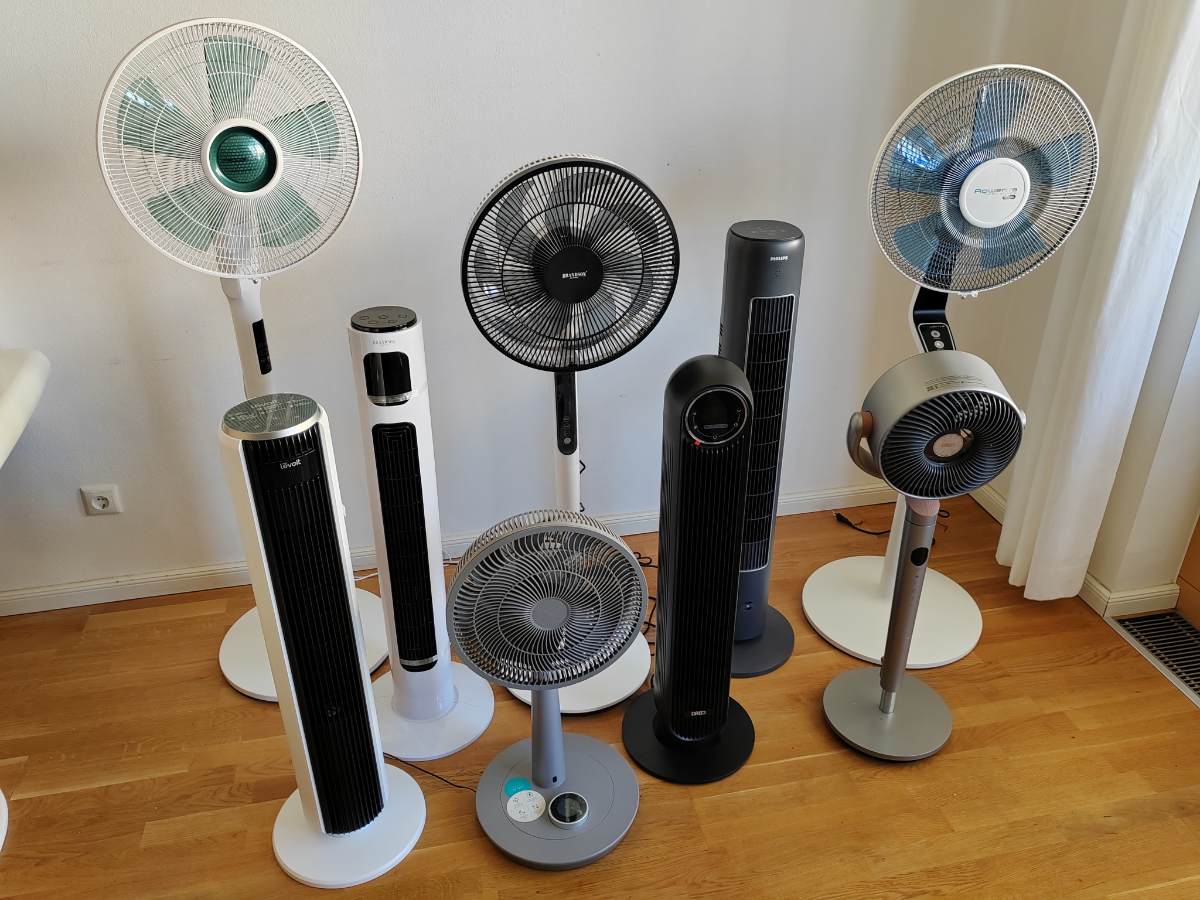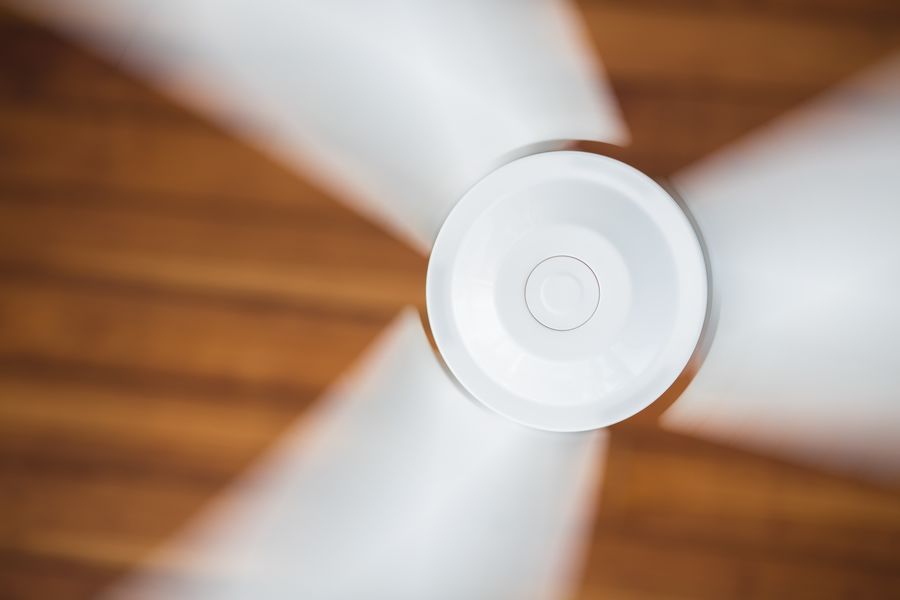Tower fan or pedestal fan: which is better?
One of the most frequently asked questions is whether a pedestal fan or a tower fan is better. As is so often the case, this depends on the exact location - and purpose.
This article should help you to make a good choice according to your requirements.
Firstly, we summarise the main differences between the two. We will then take a closer look at the pedestal fan and tower fan individually and discuss the advantages and disadvantages of each.
I will then present three models for each of the two variants that I think are worth recommending. If you're in a hurry, here are the two rankings:
Recommended pedestal fans
Recommended tower fans
Differences between pedestal and tower fans
The main differences between pedestal fans and tower fans are as follows:
- Construction method
- Functionality
- Range of functions
Construction method
Structurally, the two have little in common. The pedestal fan with its base is quite high overall. The base or the pedestal supports the rotor. The controls are usually located on the base, just below the rotor. The latter is often covered with a mesh basket.
The tower fan is much more compact. It has a cylindrical design and its operating elements are located on the top. In contrast to the pedestal fan, it does not have large rotor blades, but many small blades that all rotate together like a drum in the housing.
Functionality
The shape of both devices determines the way they work, or more precisely: the way they move the air.

The rotor of the pedestal fan is a so-called Axial fan. It moves the air along the axis of rotation of the rotor.

The tower fan has a Cross-flow fan The louvres in a cylinder rotate, sucking in the air on one side and pushing it out on the other.
In practical terms, however, it makes little difference which rotor technology you choose.
Range of functions
Tower fans usually have a wider range of functions. They often have timer functions and often come with a remote control. Not that this is not the case with pedestal fans, but these additional functions are less common.
Tower fans are better positioned when it comes to additional functions such as timer & remote control.
The range of fans with many functions is simply greater with tower fans.
Interim conclusion
In a nutshell Tower fans better suited for many applicationsbecause they...
- often have more functions
- are more compact
- look more stylish
But let's take another look at the pedestal and tower fans in detail. Then you can decide for yourself based on the criteria that are important to you.
Pedestal fan
For a long time, a pedestal fan was the top dog among indoor fans. While tower fans and, above all, ceiling fans [ 1 ] are not yet so widespread in Germany, they are slowly catching up. The tower fan is somewhat faster than the ceiling fan.
Construction of the pedestal fan
A pedestal fan has a base that is often in contact with the ground with three or four cross struts to ensure a secure stand.
The stability of the base is crucial for the quality of the product. After all, a fan that is switched on should not wobble. Not even when it is set to the highest level and swivelling back and forth.
The actual rotor is usually located at a height of around 130cm. It is often surrounded by a basket to prevent direct contact with the rotor blades.
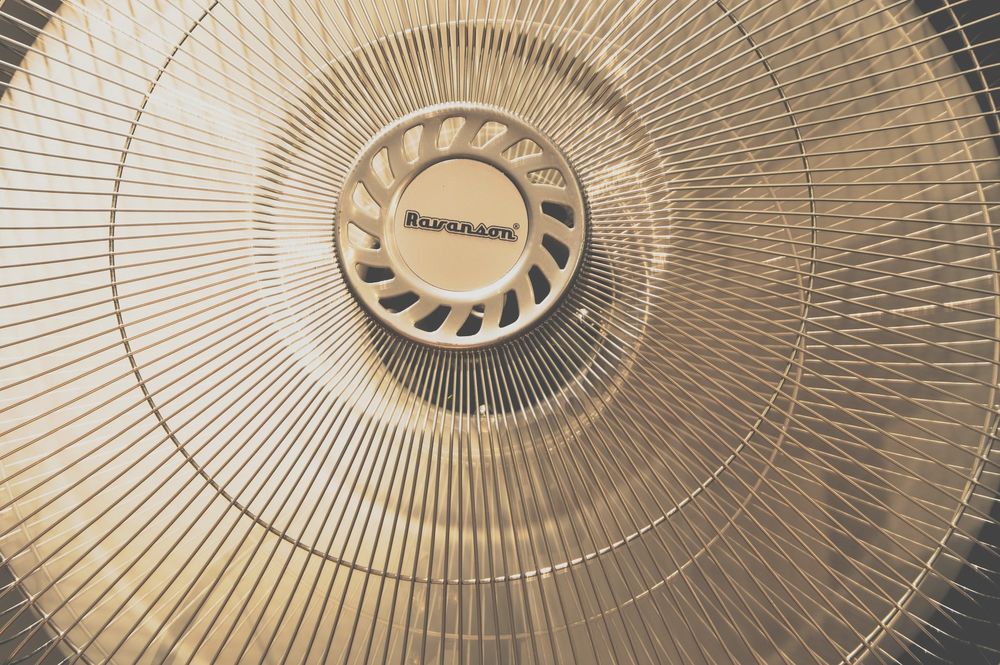
On some (often older) models, however, the gaps in the protective grille are so large that whole fingers can fit through. This is precisely what the mesh guard should prevent. I therefore recommend models whose rotor is enclosed by a close-meshed grille:

A pedestal fan is usually controlled via a control panel on the connecting rod between the rotor and the base. Depending on the range of functions, there are buttons for switching on and off, controlling the intensity and activating the oscillation.
Oscillation" refers to the swivelling of the rotor back and forth. This allows the fan to cover a larger area with its air flow.
Foot switches, which are installed directly on the cable, are also practical for pedestal fans. Similar to a floor lamp switch, the fan can be switched on and off with the foot.
Functions of a pedestal fan
The design of the fan enables relatively large rotor blades.
It should be noted that the larger rotor blades do not have to rotate as fast as smaller ones to achieve the same airflow. The high rotational speed often results in a higher noise level.
The pedestal fans therefore benefit from their relatively large rotor blades; they can generate a large air flow at a lower speed. Even better in this context are the Ceiling fanswhich easily reach spans of 150cm and more:

In addition to simply generating a strong air flow, the pedestal fan oscillates this air flow. This means that the Rotor swivels back and forth. So that it covers a larger angle and ensures more even refreshment for employees in offices, for example.
However, this is almost the end of the usual range of functions for pedestal fans. Some are still equipped with timer functions. This allows the operating time to be selected in advance. Once the time has elapsed, the appliance switches itself off.
Even rarer among pedestal fans is the option of using them as Smart home device to use. One of the few exceptions is the Xiaomi brand fan. You can find out more about this and other smart home fans in the article on Ventilation with Smart Home experience.
Recommended pedestal fans
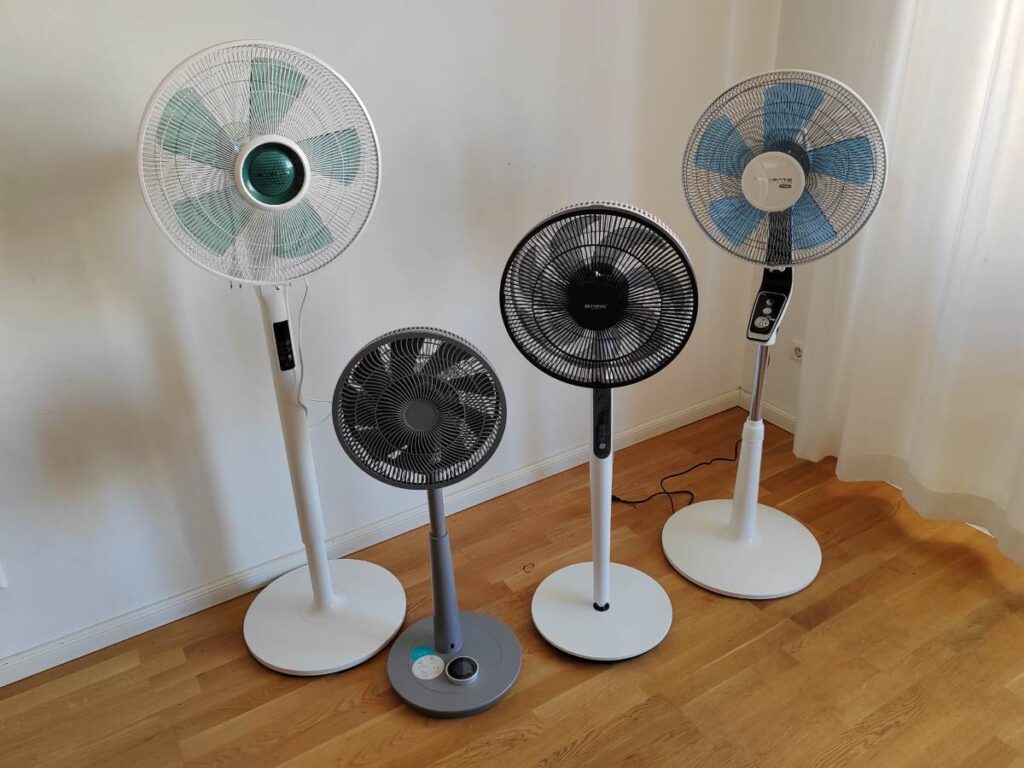
Here is a list of pedestal fans that I think are worth recommending. If you have any questions about the list, are missing a fan in this list or think that one has been unfairly included, please write to me: maxmarx1991@gmail.com
Levoit 20dB Quiet Pedestal Fans - It couldn't be quieter
The Levoit pedestal fan impresses in our test with a perfect mix of smart control, quiet operationand strong airflowmaking it the top choice for Smart Home fans. Setup is a breeze – the fan is stable, modern-looking, and ready to go in just a few minutes.
Already on Level 1 (16dB) barely audible - almost imperceptible - and yet so powerful that from approx. 3 metres away caused a candle to flicker or go out has been installed. This creates a natural, pleasant air flow, ideal for quiet nights or concentrated work in the home office.
With a total of 12 speed levels, Timer function, vertical oscillation and one Remote control the Levoit offers everything you could wish for in a modern fan. From Level 4 increases the noise level slightlybut still remains surprisingly quiet compared to many other devices and at the highest level you have real power.
In our test, the Levoit pedestal fan was not only quieter than the Levoit tower in 2nd placebut also significantly quieter than the Rowenta (3rd place). The only small drawback: the the vertical oscillation range could be a bit wider. - A little more flexibility would be desirable here.
Simulating natural wind is often perceived as more pleasant than a constant flow of air over a long period of time.Our conclusion:
A real The quietest of fans - with functions that are otherwise only found in higher price ranges. A real insider tip for currently less than £130.
👉 Tip: Watch our videoWatch the video to see the Levoit in action. It's set to a high level here, so it's a bit louder than usual It couldn't be quieter - a snap of the fingers at the end as there is already a sound on here 😉
Rowenta pedestal fan Turbo Silence Extreme - bestseller among fans - Bestseller among the fans
With almost 20,000 ratings counts the Rowenta Turbo Silence Extreme to the absolute Bestsellers among the pedestal fans - and there's a reason for that. The workmanship is solid, the performance impressive and the assembly simple. But let's take a closer look.
Despite the name ("Turbo Silence Extreme"), the Rowenta itself 45 dB as the minimum volume. In our test we were at approx. 37 dB at the lowest level - audible, but still within an acceptable range. For very sensitive users or quiet bedrooms, however, it is not recommended. not the first choice.
The Fan provides plenty of power: A Large rotor blade, 4 levels (incl. Turbo mode and Silent Night) and the largest, heaviest stand in the comparison test ensure Stability and range. The Height adjustment is a practical extra that makes it flexible all-rounder characterised.
Who wants a Powerful, classic pedestal fan you can't go wrong with the Rowenta. If you decide in favour of this model, you should "+" versionas it is usually somewhat better equipped.
Rowenta Turbo Silence Extreme + - Top processing
The Rowenta Turbo Silence Extreme+ scores in the test with the best workmanship and the highest quality design among all devices tested. The Stand is particularly stable and heavywhich ensures a secure grip - ideal for uneven floors. The large rotor with multiple blades not only looks impressive, but also delivers plenty of power. On Level 1 was measured at around 23 dBwhich makes him one of the quieter pedestal fans perfect for quiet environments. But those who Power searchshe gets on Level 16 supplied more than adequately - Here the Rowenta moves an extremely large amount of air.
Apart from its enormous power, the Rowenta product has nothing to hide:
- 16 levels
- Natural wind mode
- swivels 120 degrees
- Timer up to 12 hours
- Remote control
Exciting: In direct comparison to the Normal Rowenta Turbo Silence pedestal fan (see below in the test), the Extreme+ variant significantly quieter a real difference in everyday life, which is particularly noticeable in bedrooms. For those who value high-quality workmanship and is prepared to £149.00 to investgets an appliance that is visually and functionally impressive. A quiet, powerful fan for anyone who doesn't want to compromise on quality.
Tower fans
Now that we've dealt with the pedestal fans enough, let's take a look at the tower fans.
Tower fans have become increasingly popular in recent years. In my opinion, this is due to the more compact design and the often greater range of functions. A tower fan simply takes up less space and looks more stylish. This is precisely why they can now be found more often in private households.
However, if you are looking for a more powerful solution, you should definitely take a look at Mobile air conditioners in the test ideal for those who want more than just air circulation.
Structure of the tower fan
A tower fan usually has a Cylindrical shape and is about waist-high. The buttons for operating the device are usually located on top and sometimes even a holder for the remote control - if available.
There is a permeable grille all round, which allows the air to flow in and out of the housing. Unlike the pedestal fan, there is no classic rotor responsible for moving the air.
You can find out more about this in the article on rotorless fans in which the differences between the various types of Rotos are explained right at the beginning.
Functions of the tower fan
A tower fan usually has a Timer and often even a Remote control.
With some models, the Tilt the housing by a few degrees. This means that a tower fan placed on the ground can also reach higher areas with the air flow.
As with pedestal fans, there are hardly any models that can be customised to your own needs. Smart Home can be connected. Among the fans, most Smart Home-capable devices can be found among the rotorless fans:

Bladeless fans
How rotorless fans work and which models are recommended.
Recommended tower fans
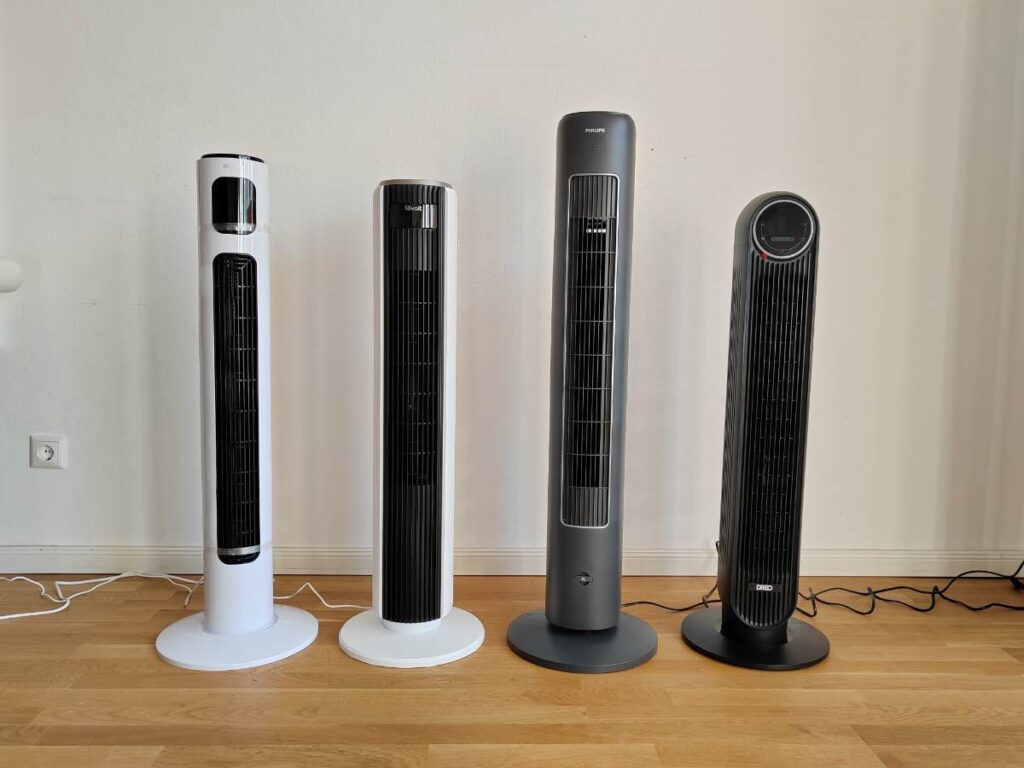
Here is a list of tower fans that I think are worth recommending. If you have any questions about the list or think that a product should or should not be listed here, please write to me: maxmarx1991@gmail.com
Philips oscillating tower fan - Quiet with fragrance diffuser function
The tower fan from Philips is a Solid, functional fanwhich is particularly characterised by its Size, air performance and quiet operation convinced. Compared to other models such as the Levoit, Brandson or Dreo, it falls short of the mark. larger and also offers more powerwithout getting loud.
The Wide air outlet According to the manufacturer, it provides an air flow of up to 2230 m³/h - You can tell: the room is ventilated noticeably quickly. Philips specifies a noise level of 39 dB (min) to 46 dB (max) to. In my test, the volume at level 1 was only approx. 26 dB. That is Very quietbut still perceptible - more of a gentle hiss. Immediately after switching on, there was a Short electronic buzzing audible, which disappeared after approx. 30 seconds. Possibly device-specific.
- 3 speed levels
- Nature mode with changing air intensity
- Oscillation approx. 60° horizontal
- Timer from 1 to 4 hours
- Remote control included (with limited range)
With 3 speed levels and 3 modes (including a natural mode with varying intensity), the device offers enough variety for everyday use. The natural mode in particular conveys a pleasantly changing feeling of ventilation - from a gentle breeze to a powerful airflow. The integrated Timer (1 to 4 hours) is also practical, especially for the bedroom.
A nice extra is the Flavour diffuserwhich can be filled with your own essential oils. If you like subtle fragrances, you can also create a relaxing atmosphere - even if this remains more of a bonus feature.
The Design is slim, simple and space-savingideal for living rooms with limited space. The workmanship is of high quality throughout and assembly is quick and easy.
Levoit 21 dB tower fan - Many functions for little money
The Levoit is a little louder in direct comparison to the Brandson pedestal fan: 21dB (although you can hardly hear it) at the lowest level - this is almost exactly the manufacturer's specification of 20 dB and is one of the quietest models on the market.
The Assembly was completed in less than three minutesand the The stand was the quickest and easiest to install compared to other devices. Particularly impressive: Although it runs so quietly, the Air flow at level 1 strong enough to blow out a candle from a distance of three metres - a rare value in this appliance category.
On Stage 12, the Levoit delivers an air velocity of up to 7.9 m/s - more than enough for a quick cool-down on hot days. Thanks to the 90° oscillation the air flow is distributed evenly throughout the room. The LED display with temperature display, Remote control, 12 speed levels, 4 modes and a 12-hour timer round off the overall package. The fan in plain white also cuts a fine figure visually.
Important to know: With most tower fans, the air flow can be Do not adjust verticallybut flows always straight ahead. With a price of around £71.99 the Levoit offers a Impressive overall package of smooth running, performance and ease of use - Perfect for all those who also want to don't want to do without a cool breeze, but appreciate absolute peace and quiet.
Brandson tower fan - favourable alternative
The Brandson tower fan is one of the cheaper models in our test and offers an astonishing amount of features: 3 speed levels, 3 operating modes (including a natural mode with alternating air flow), Timer (1-12 h) and a Remote control with holder directly on the device.
The manufacturer specifies a volume of 38 dB at the lowest level on - we measured around 29 dB. This is quiet, but already audibleespecially in very quiet surroundings. For sensitive ears in the bedroom Not idealbut still within an acceptable range.
The Air distribution is well solved by the 96 cm heightand also the 60° oscillation ensures proper area coverage. The Stand is heavy and offers good hold. One small weak point: the Display is difficult to read in daylight.
Overall a Functional, affordable tower fanwhich is technically solid, but cannot quite keep up with the quieter top models when it comes to volume. Who wants a Small budget If you've got a lot of appliance for little money, it's worth paying a little more for quieter models.
Conclusion
As already mentioned in the interim conclusion, tower fans are more suitable for most applications. They offer more functions and take up less space at the same time.
The pedestal fan is a good alternative in offices and wherever space is less of an issue. Due to its rotor design, it produces a slightly different sound and generates a larger air flow at the same speed.
Even if tower fans are height-adjustable and tiltable, they do not quite reach the height of pedestal fans. Depending on the layout of the room, a pedestal fan may therefore be more suitable.
A completely different alternative is the ceiling fan. It has even larger blades and is even quieter than the pedestal fan with the same air flow:
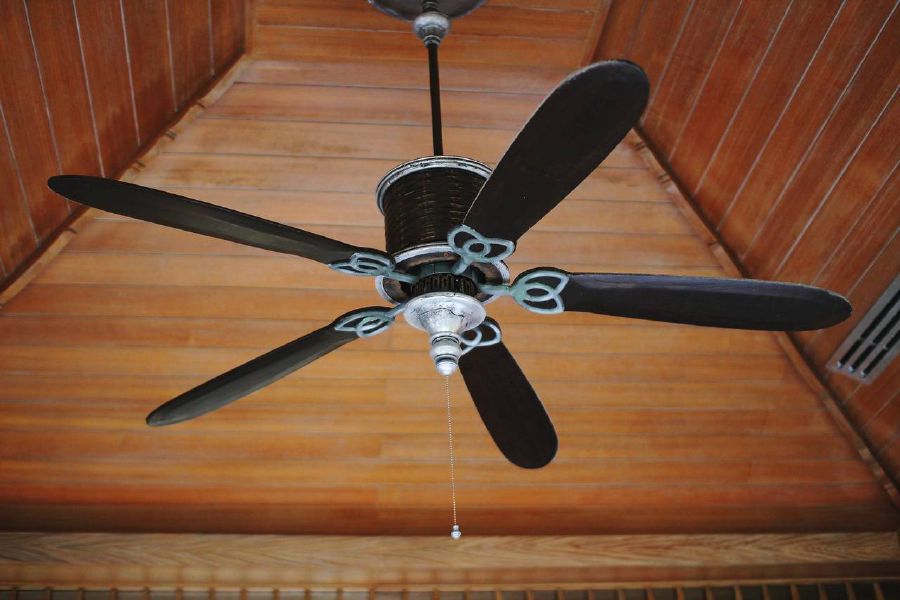
Ceiling fans
Recommended ceiling fans: These models are well suited for private households.
Sources
[1] ↑ https://www.openpr.de/news/378248/Deckenventilatoren-finden-in-Deutschland-noch-keine-grosse-Verbreitung.html
